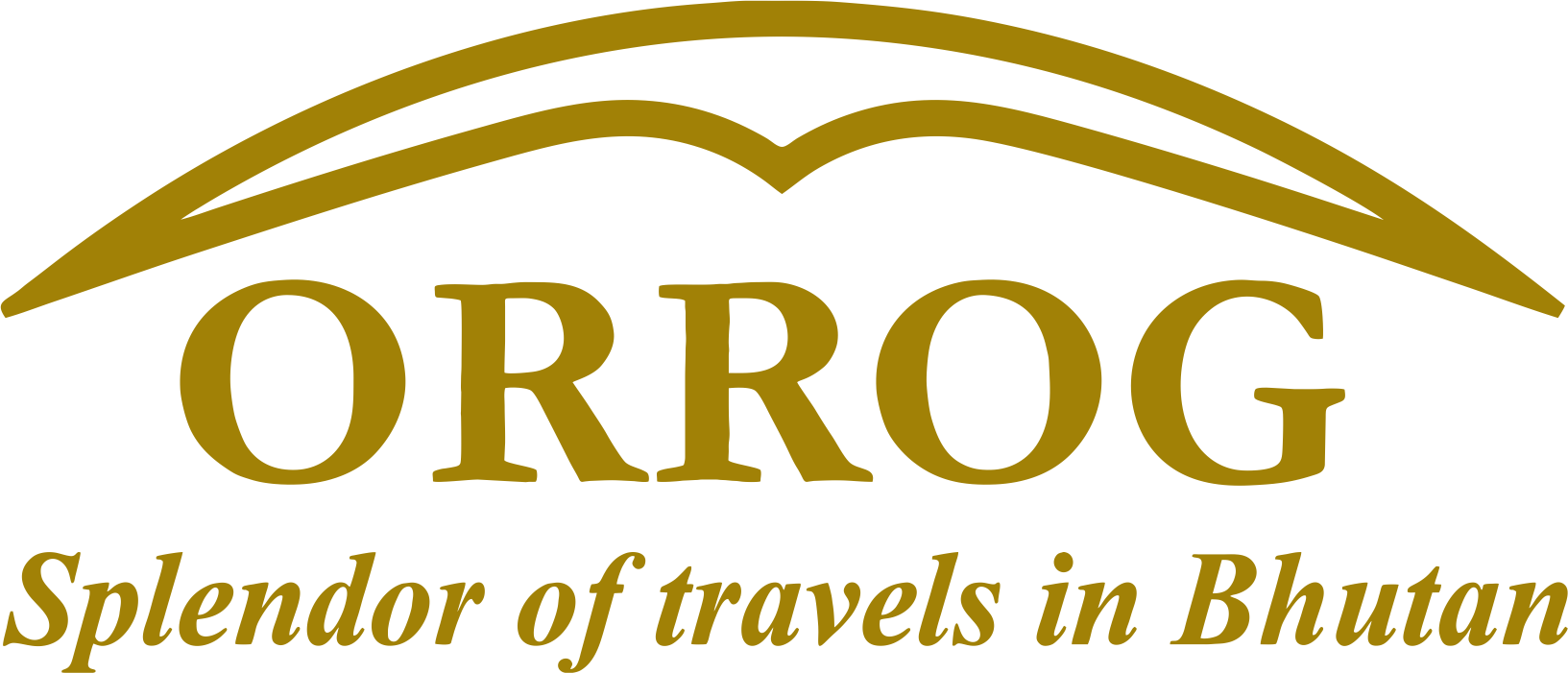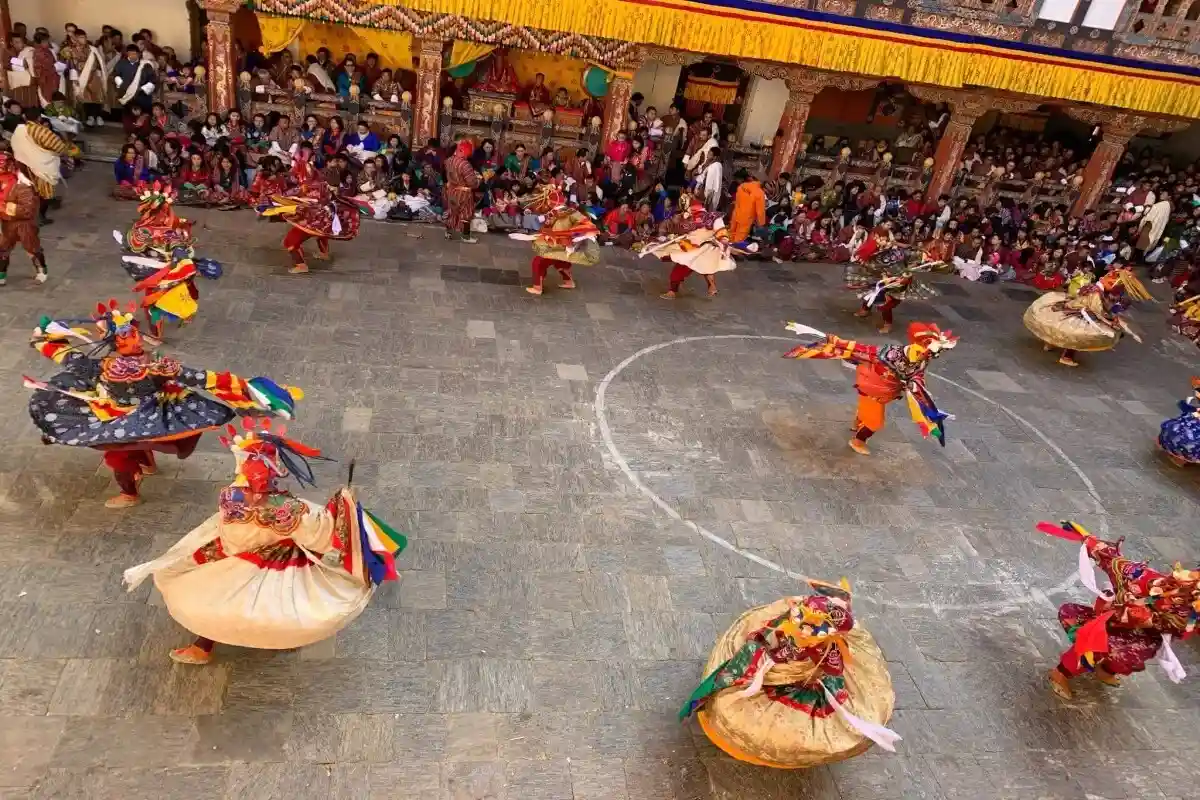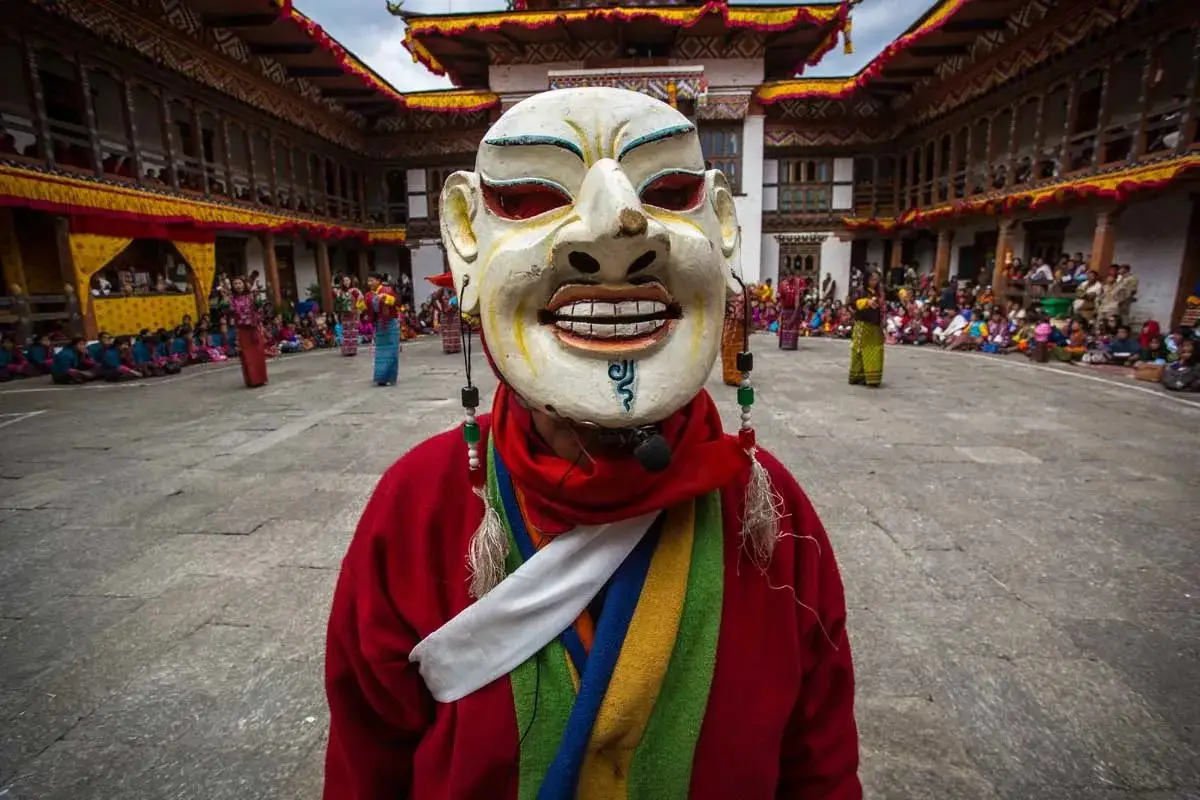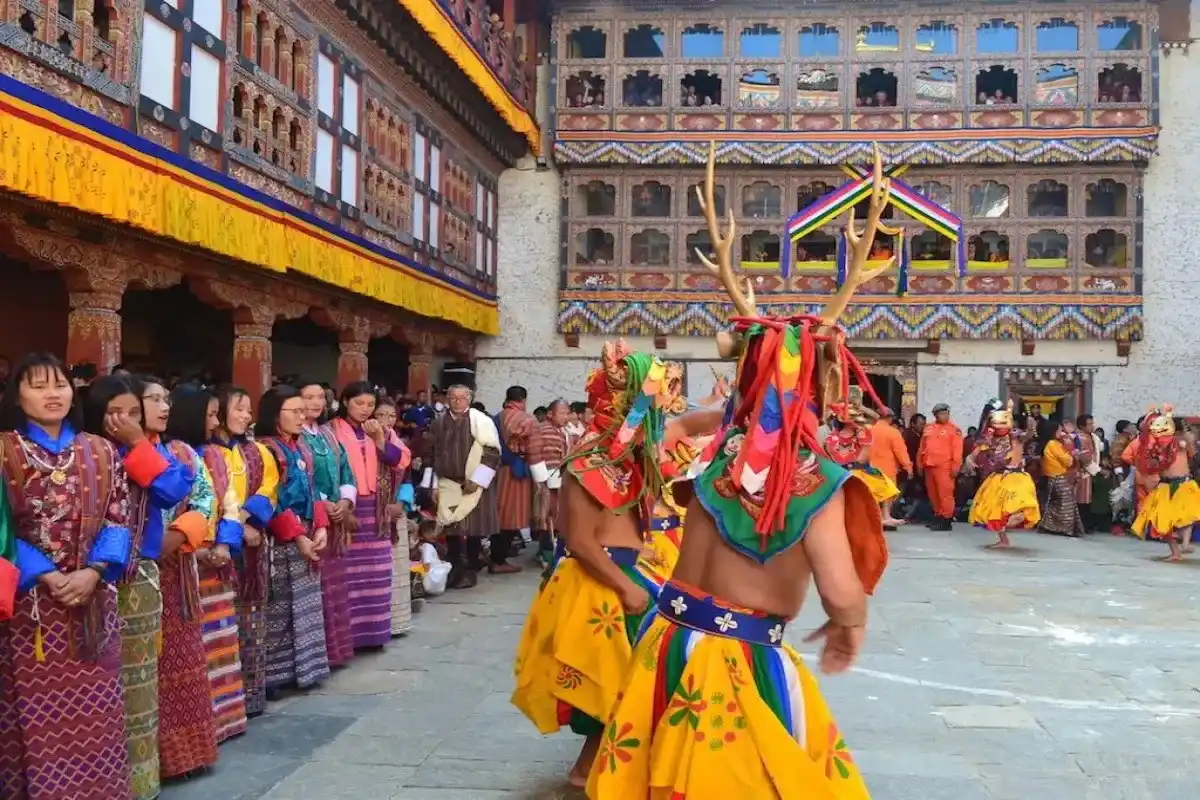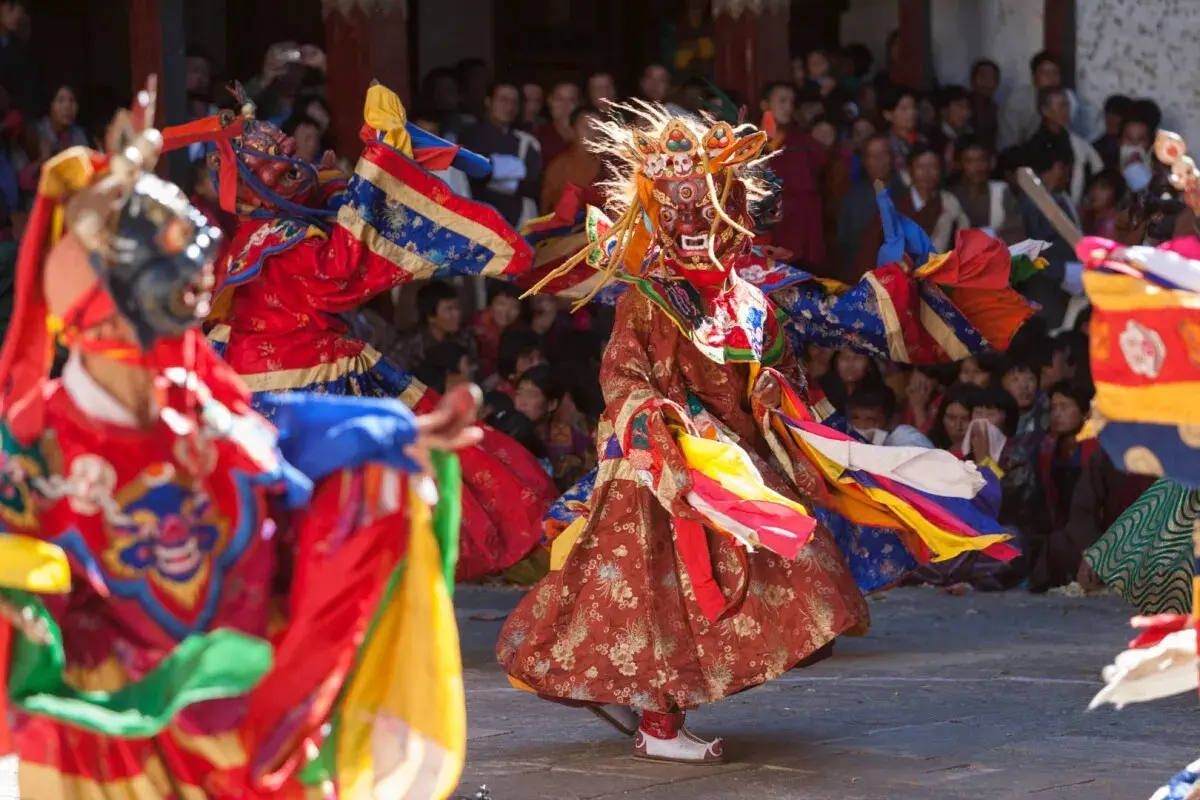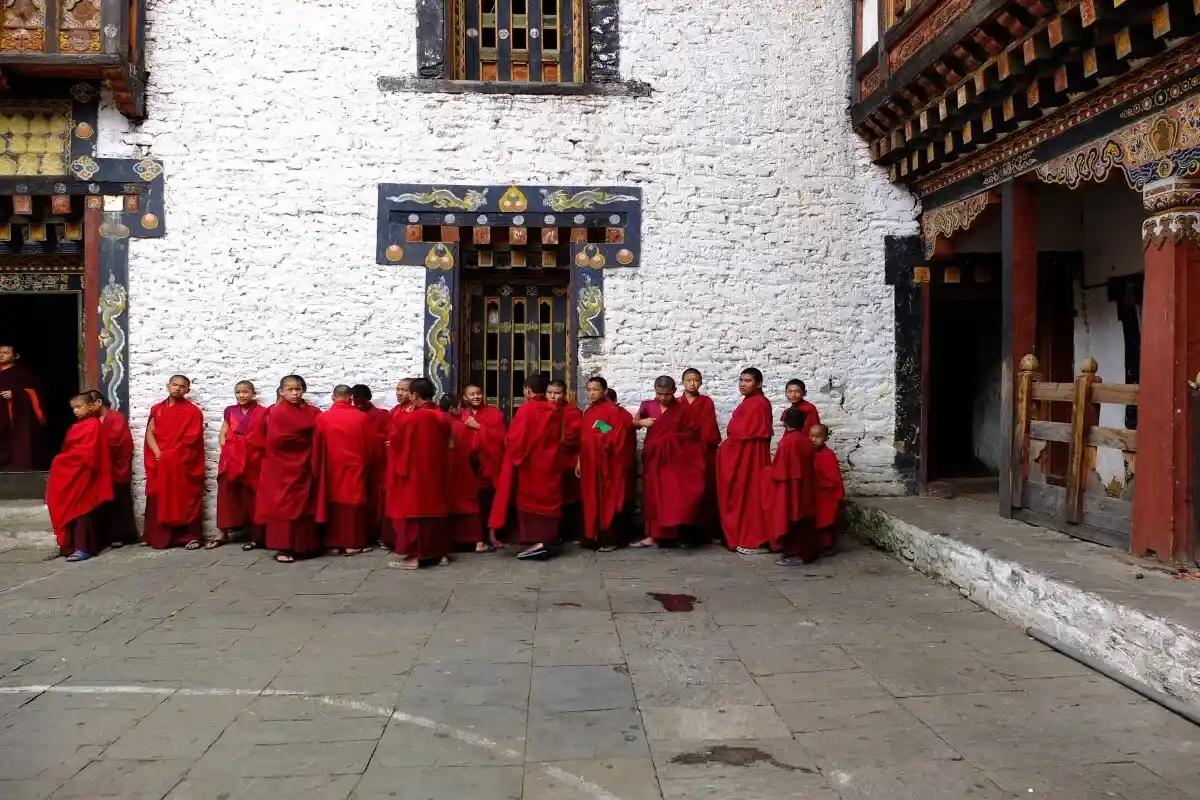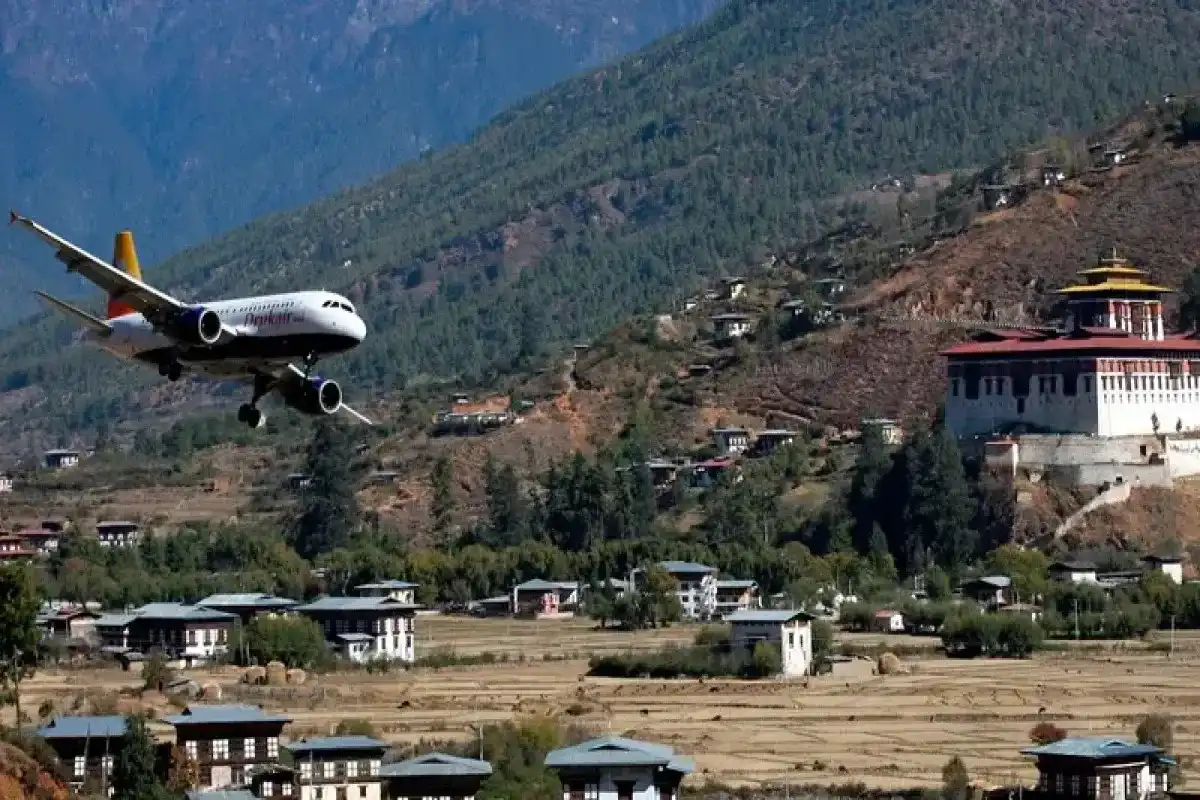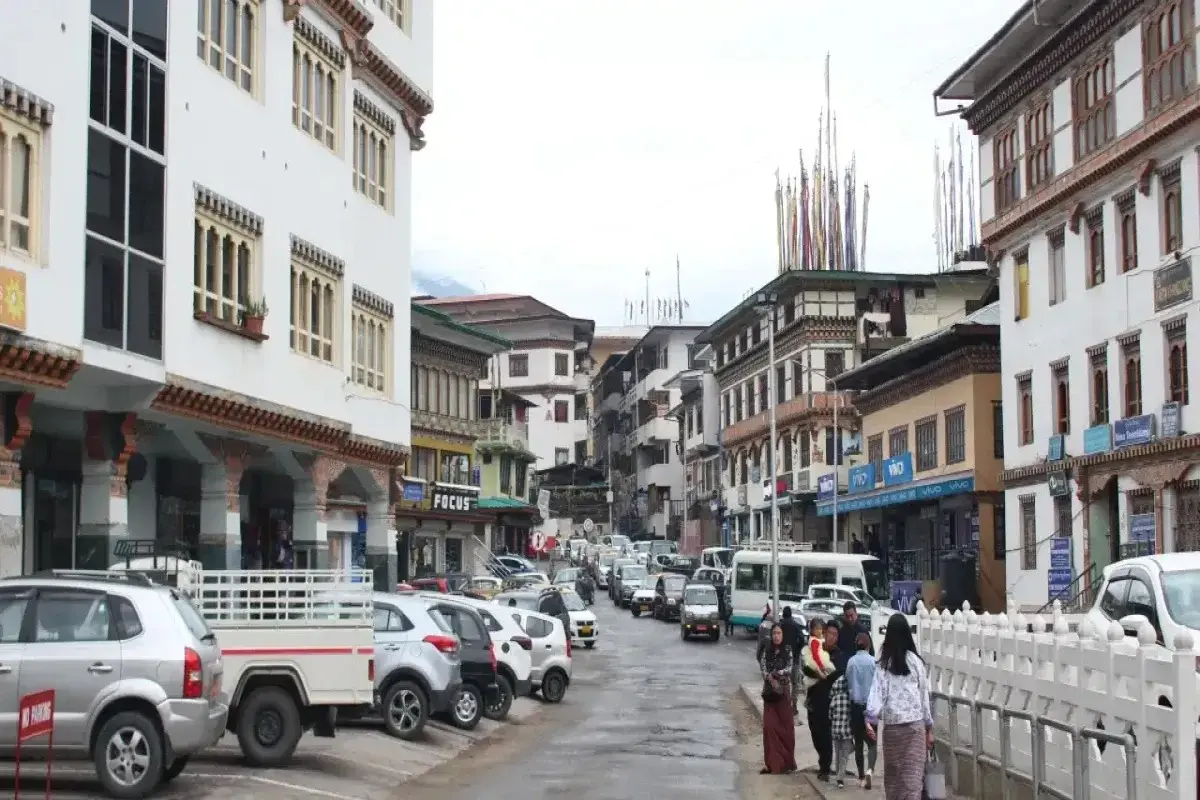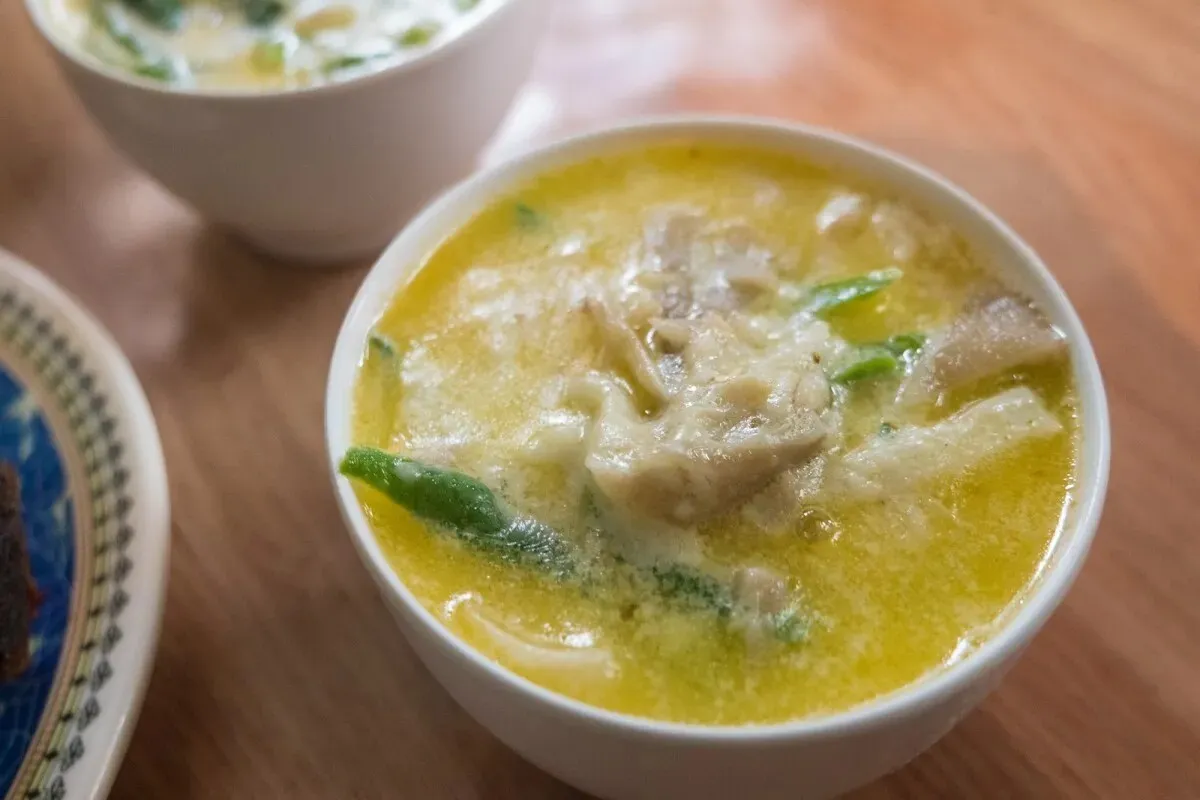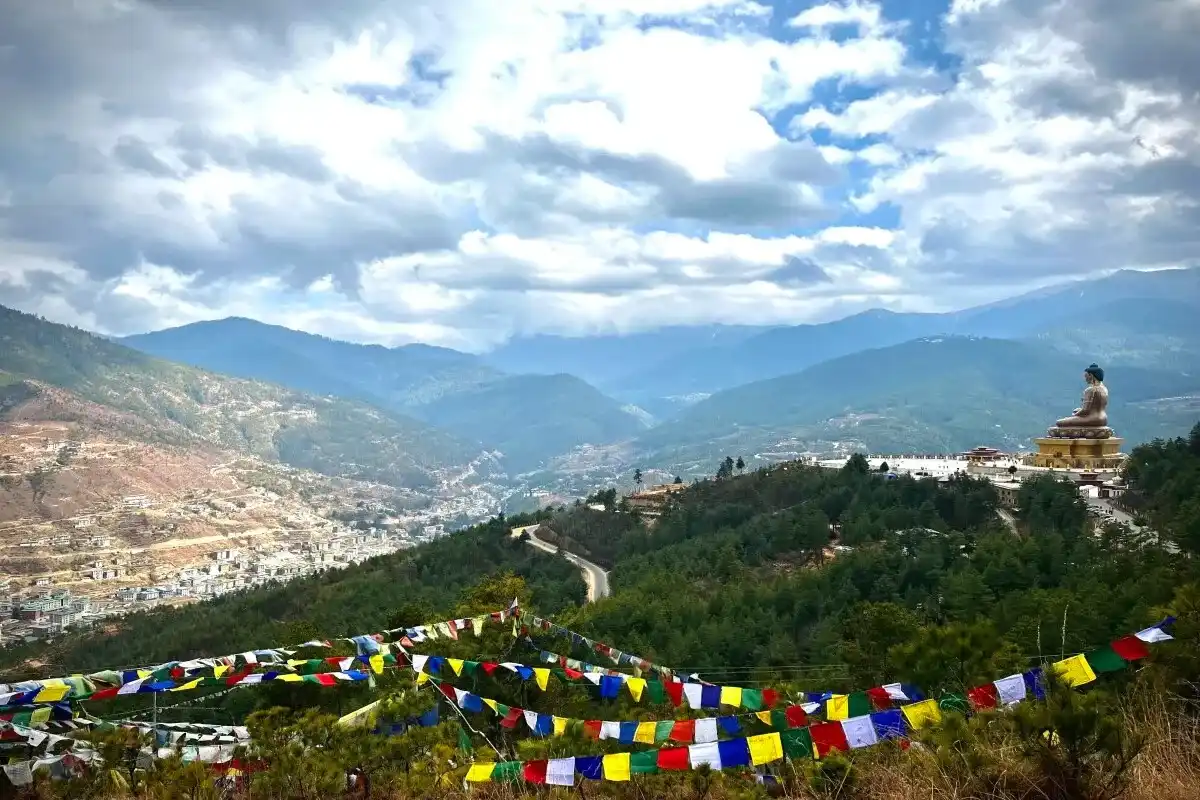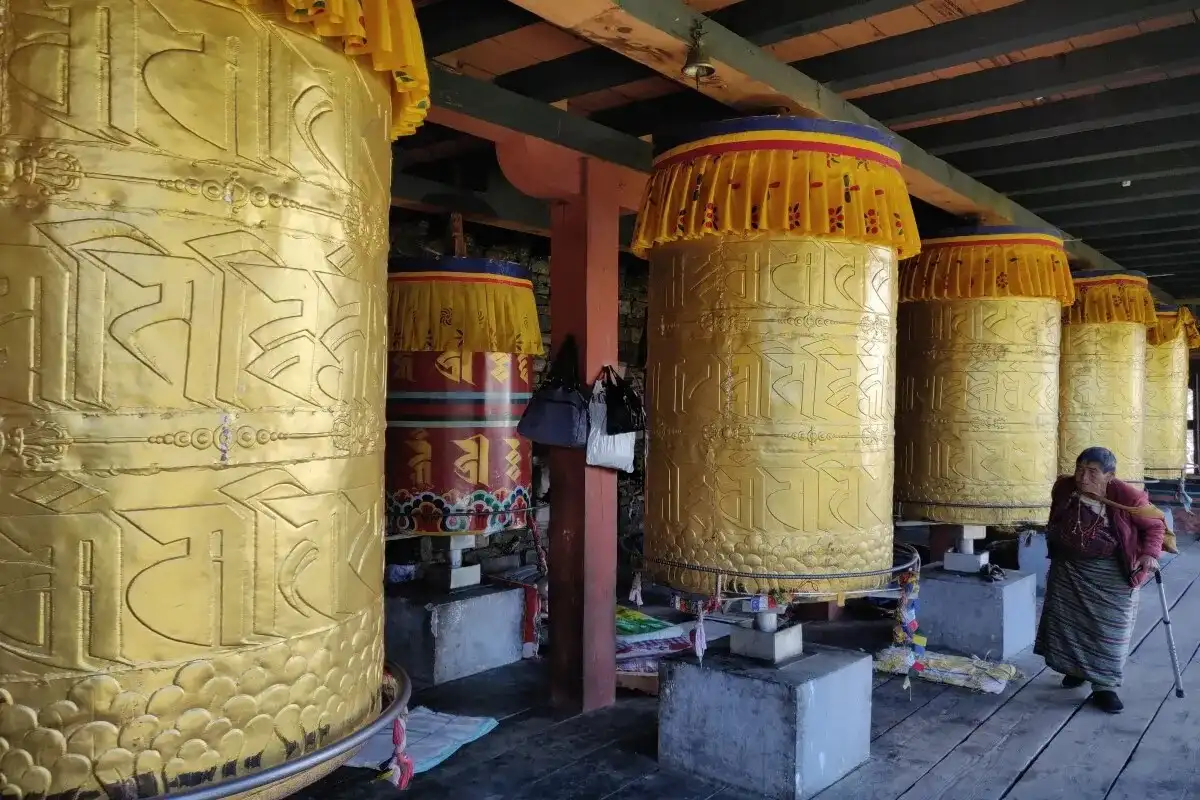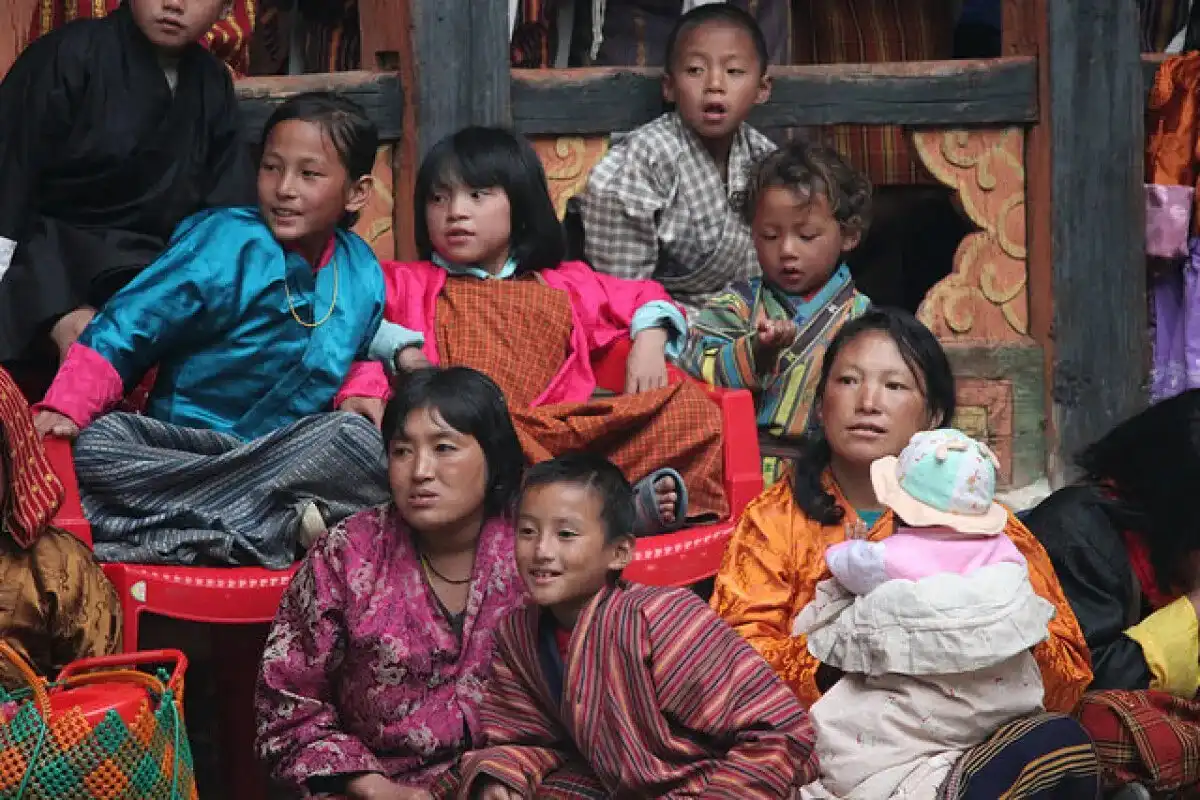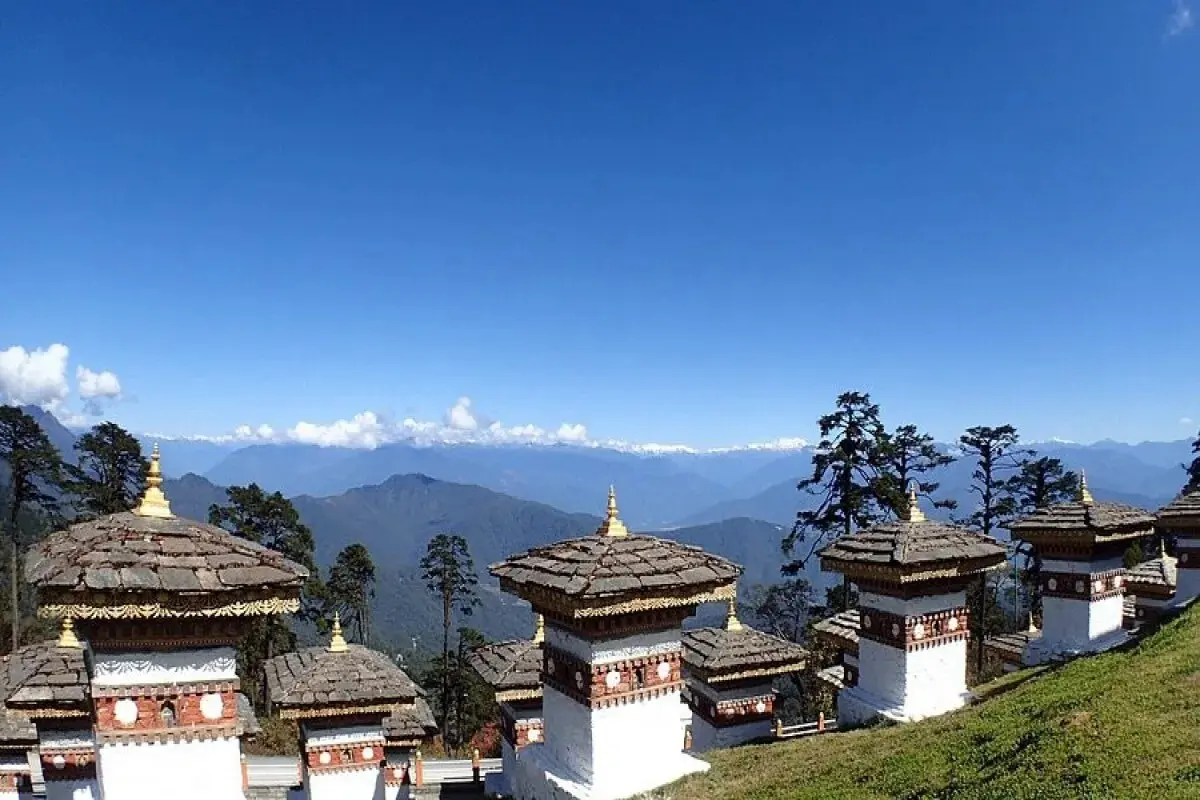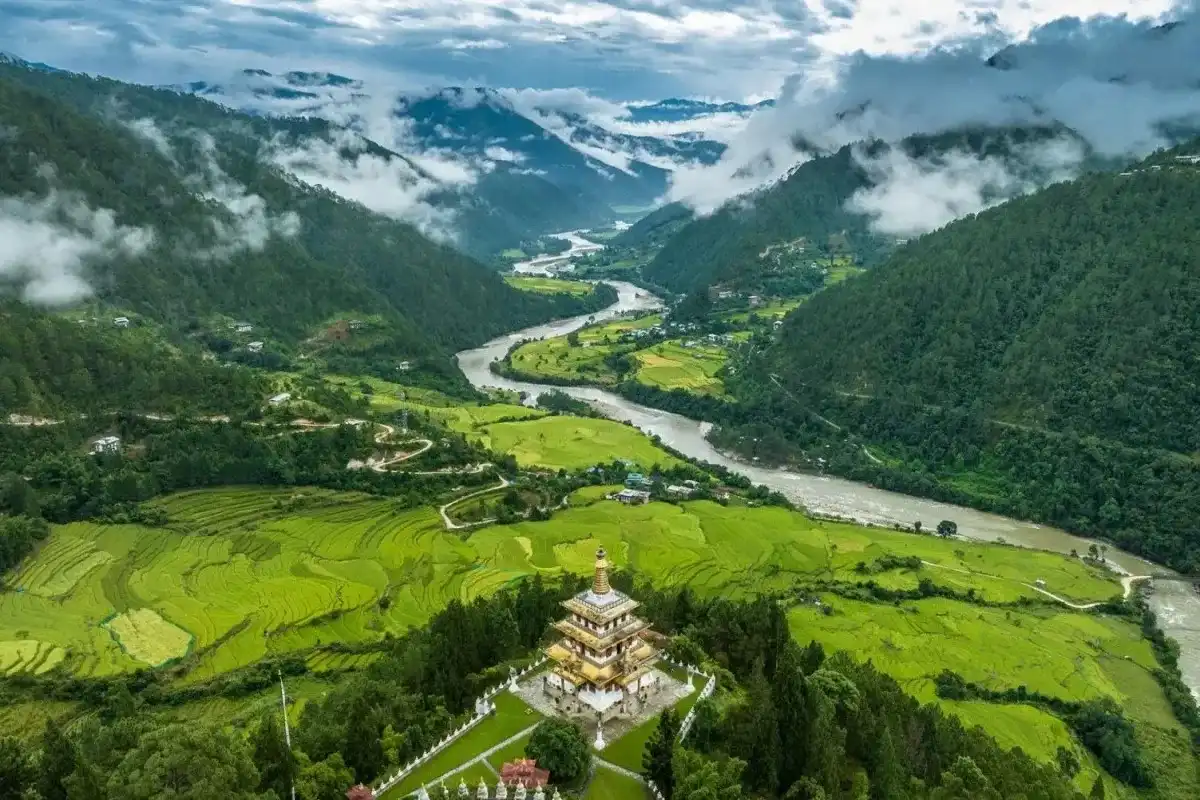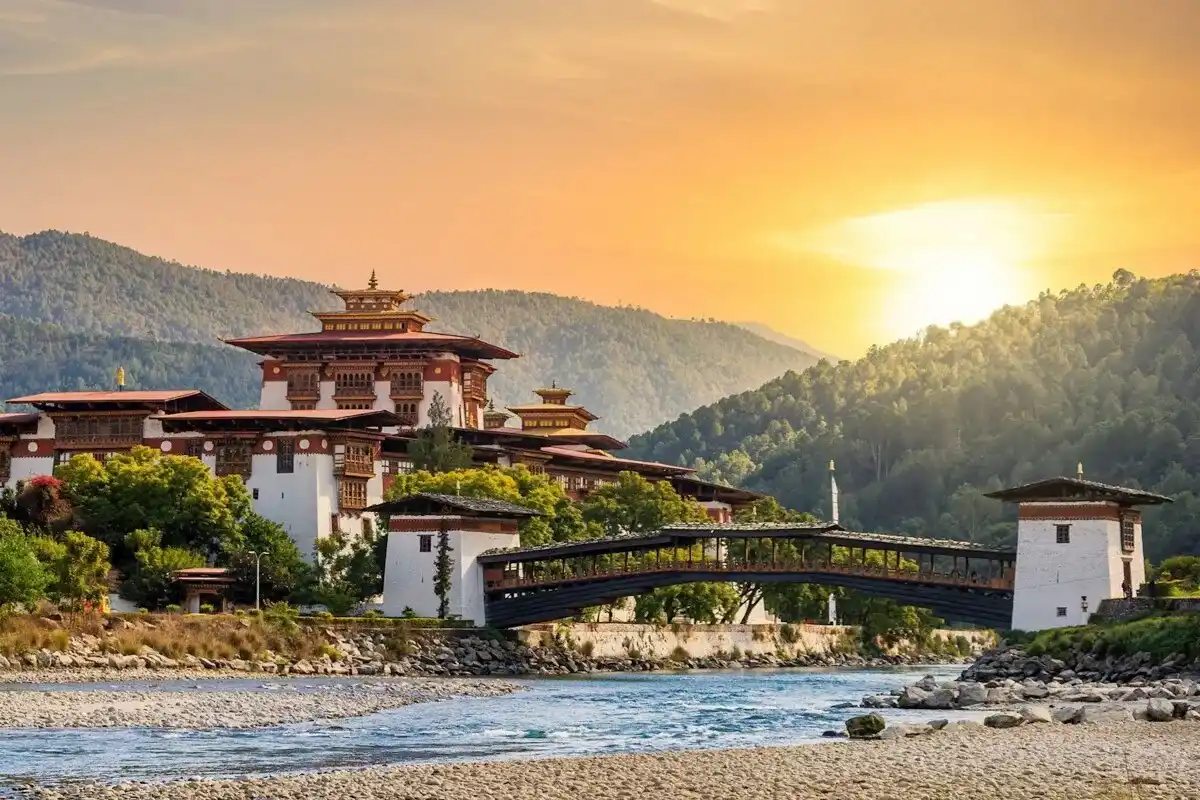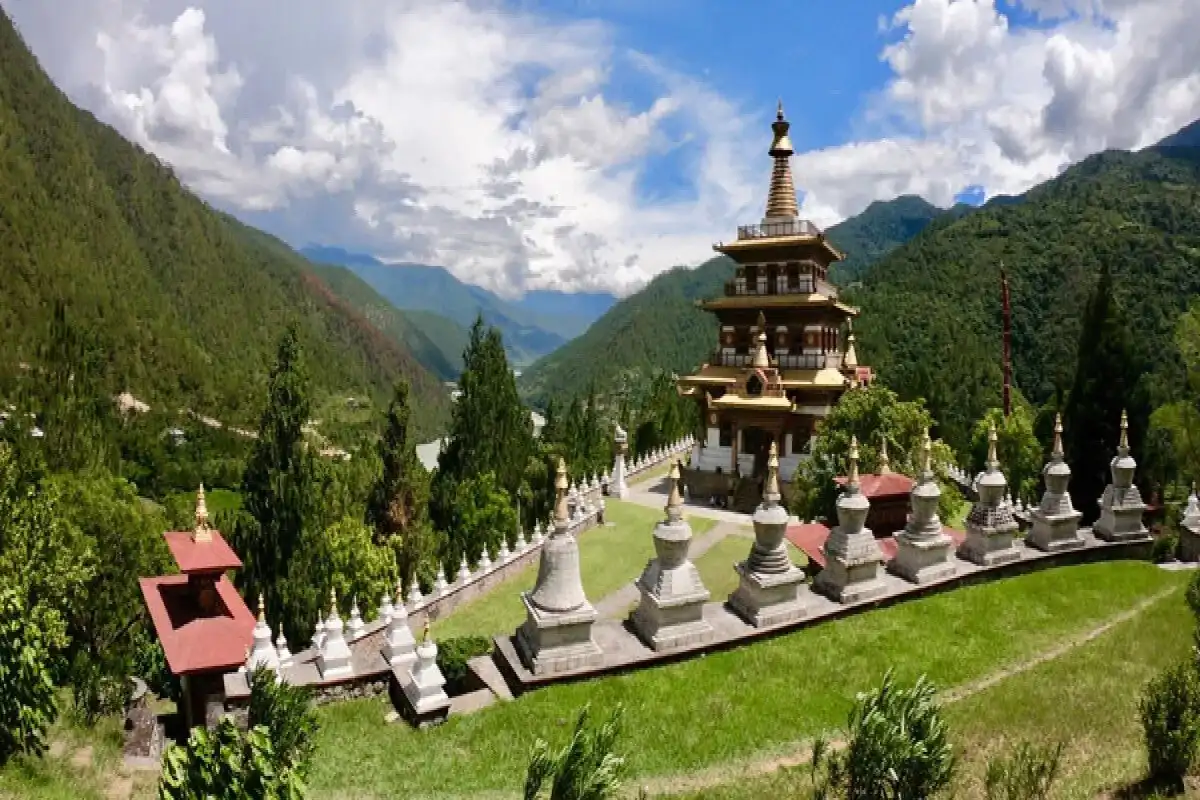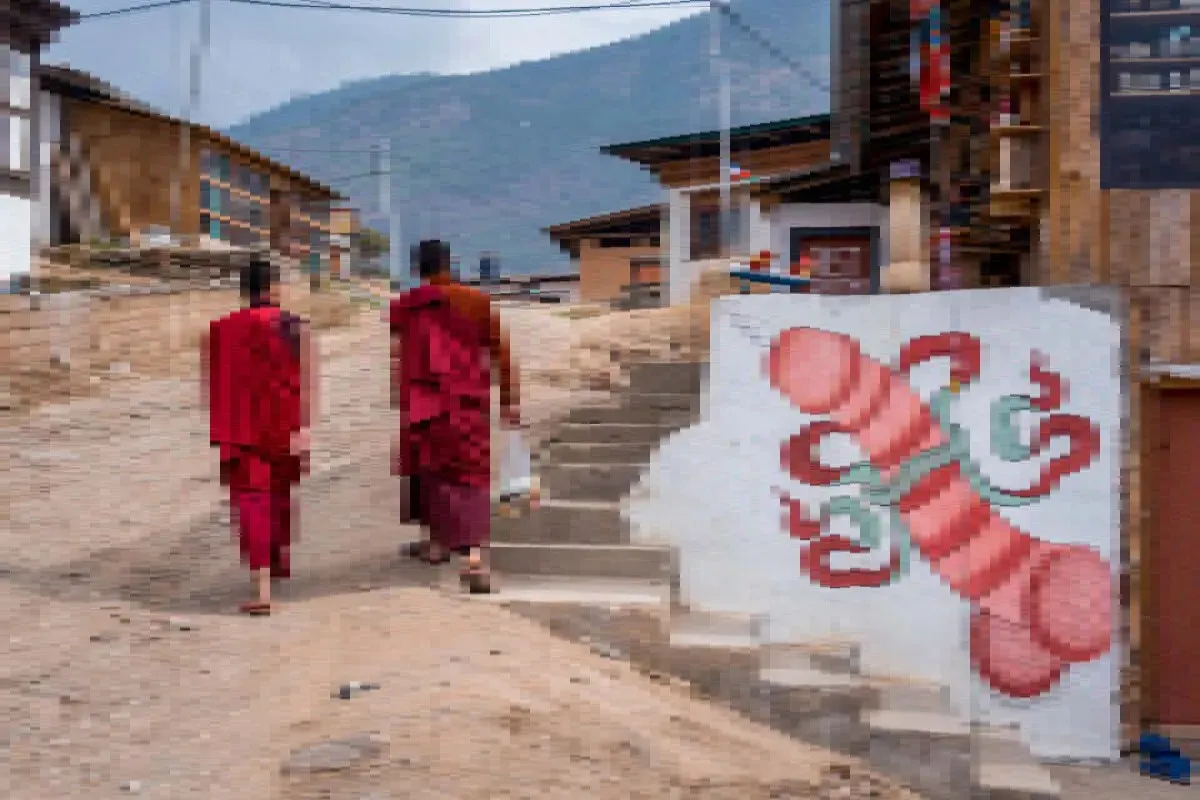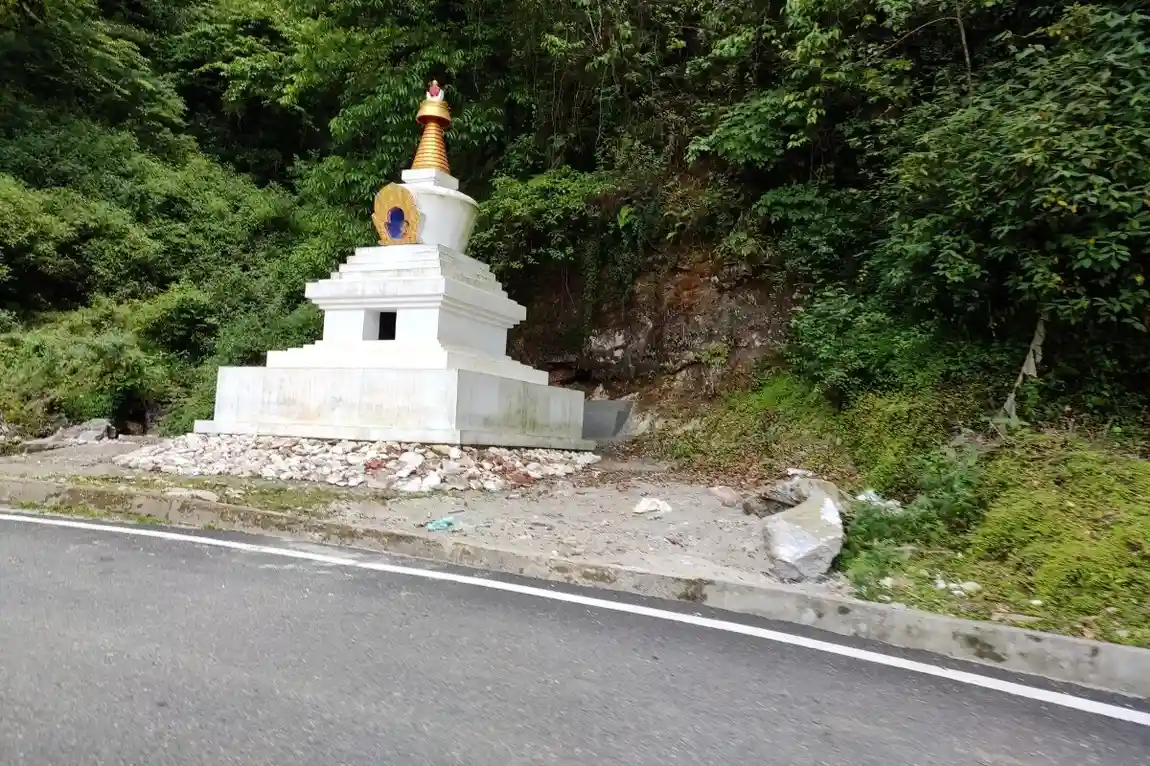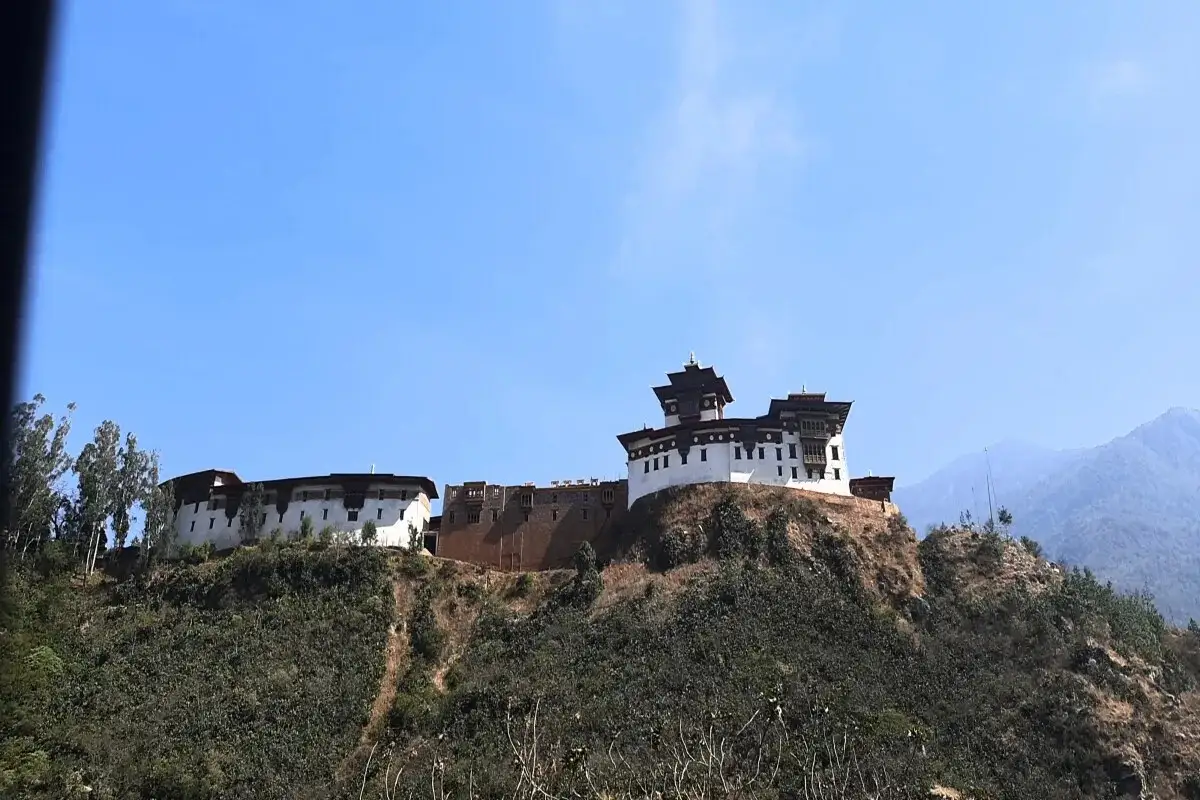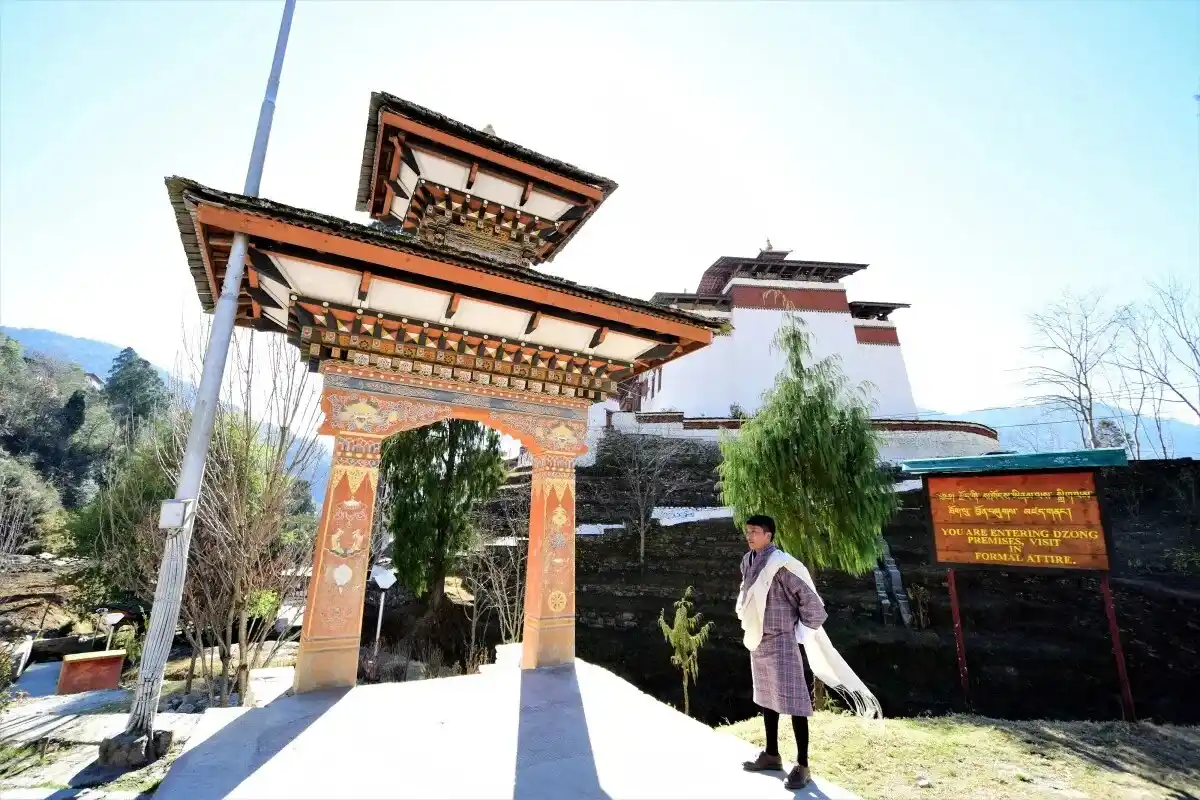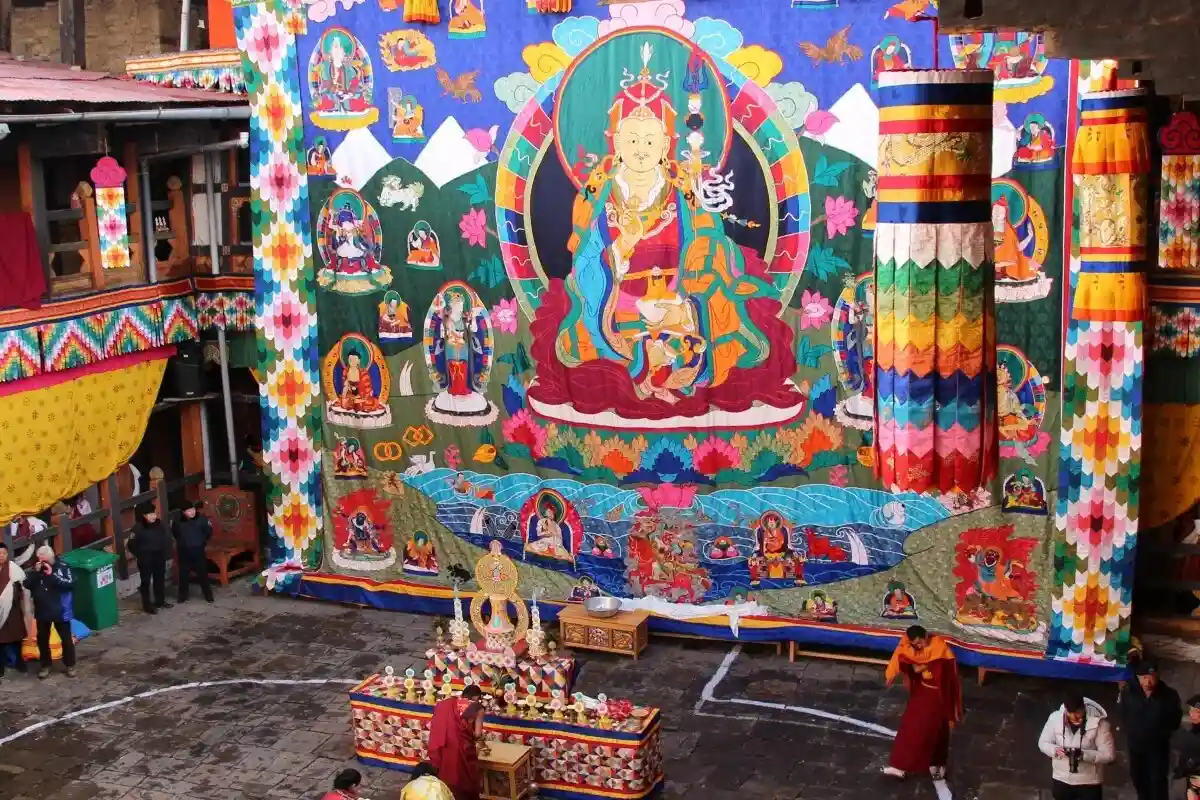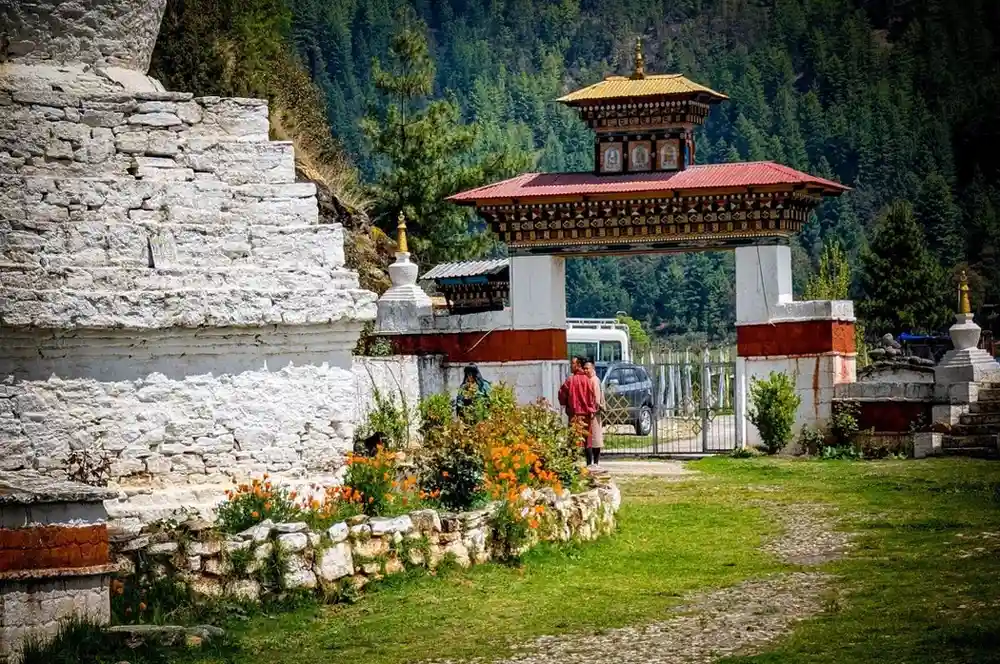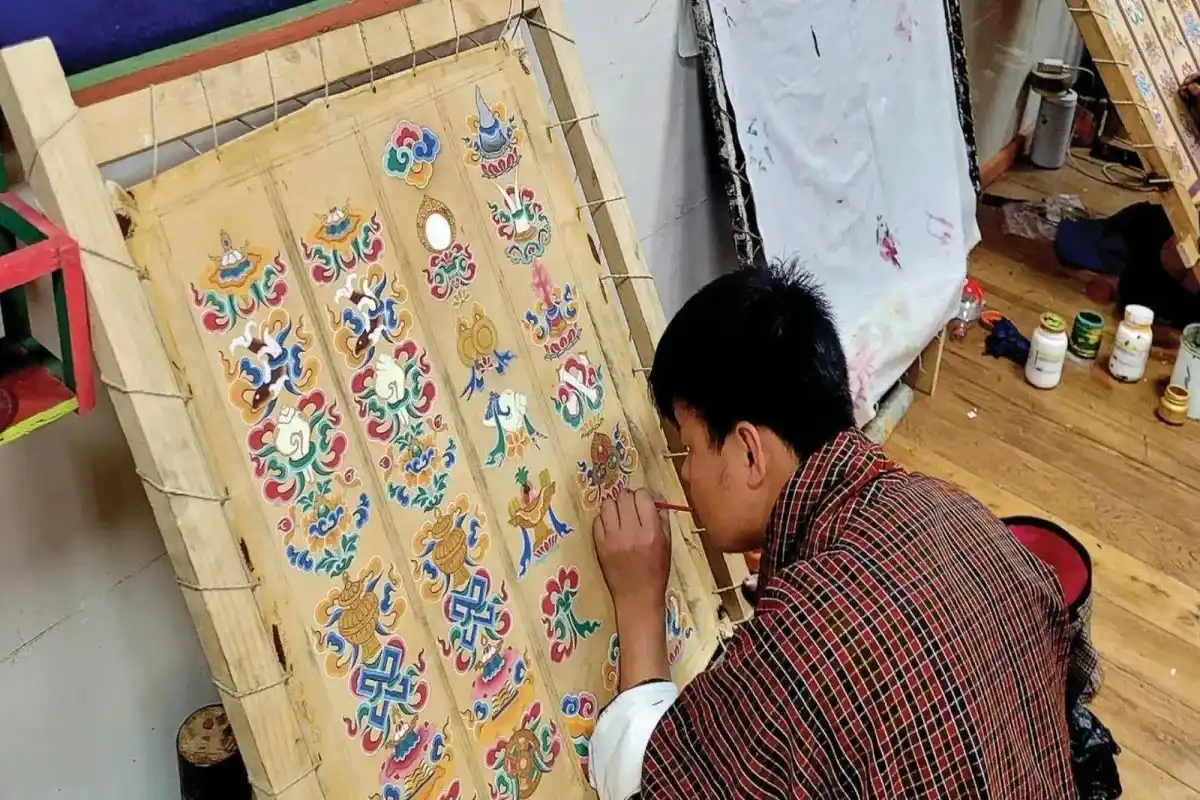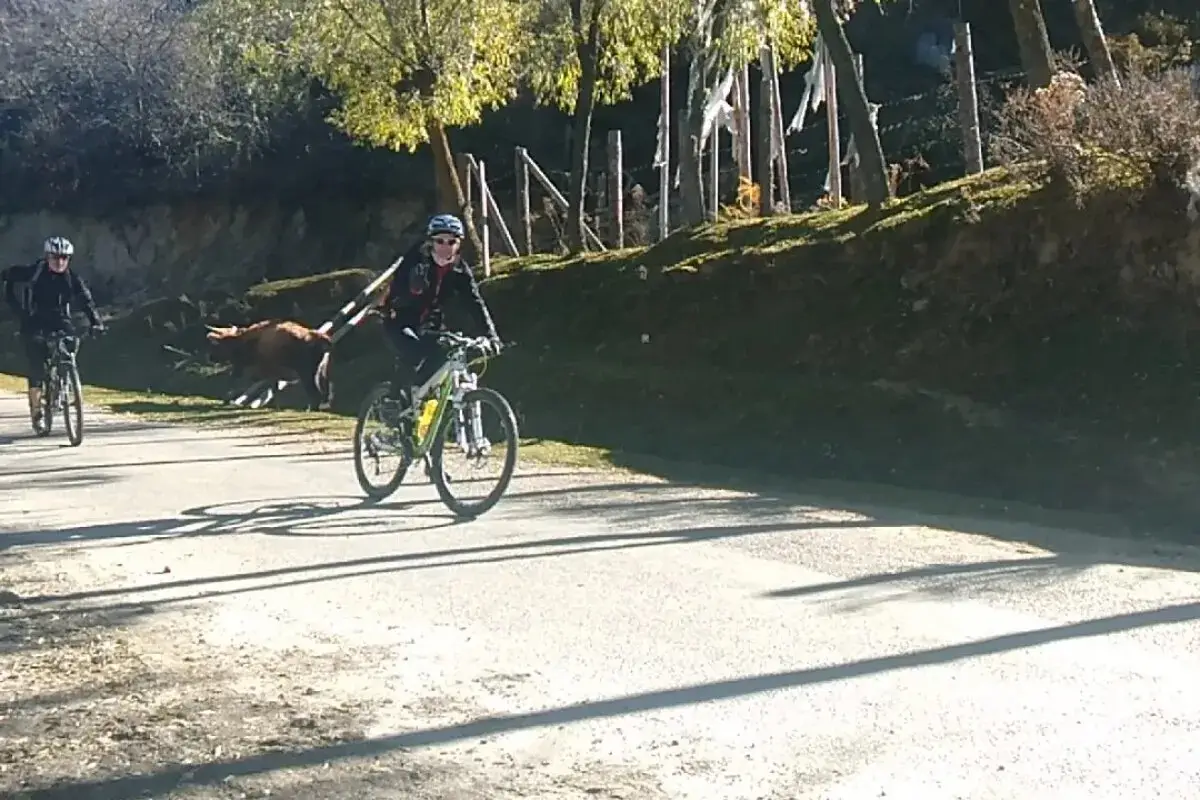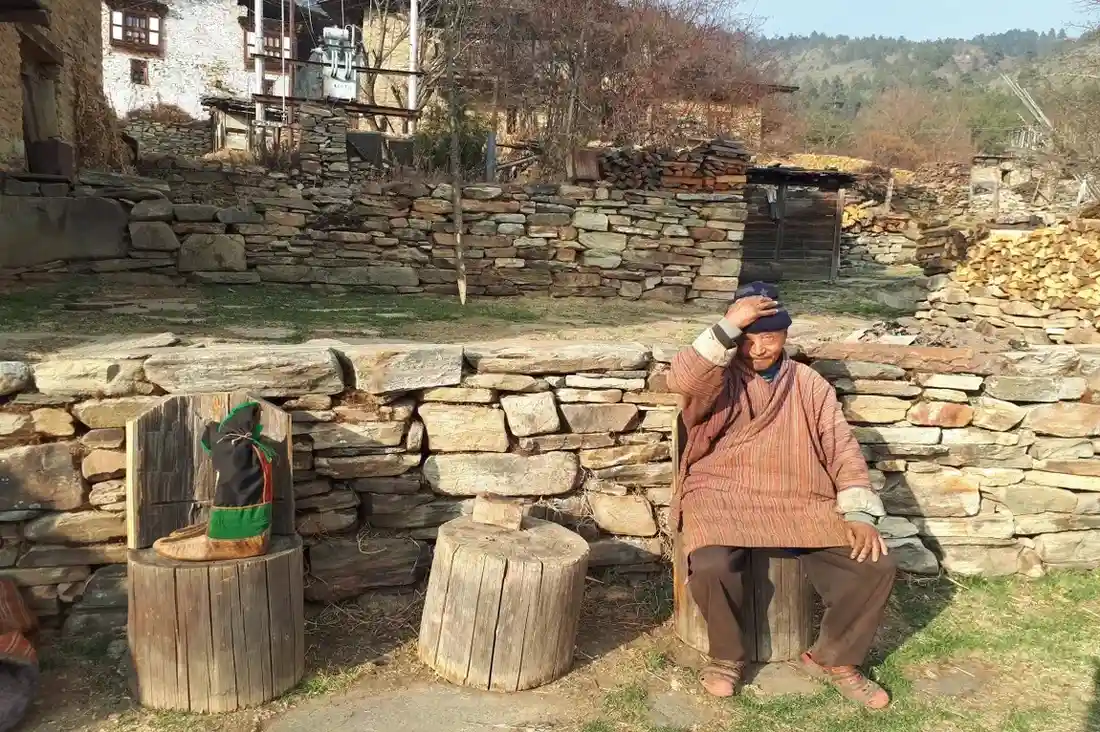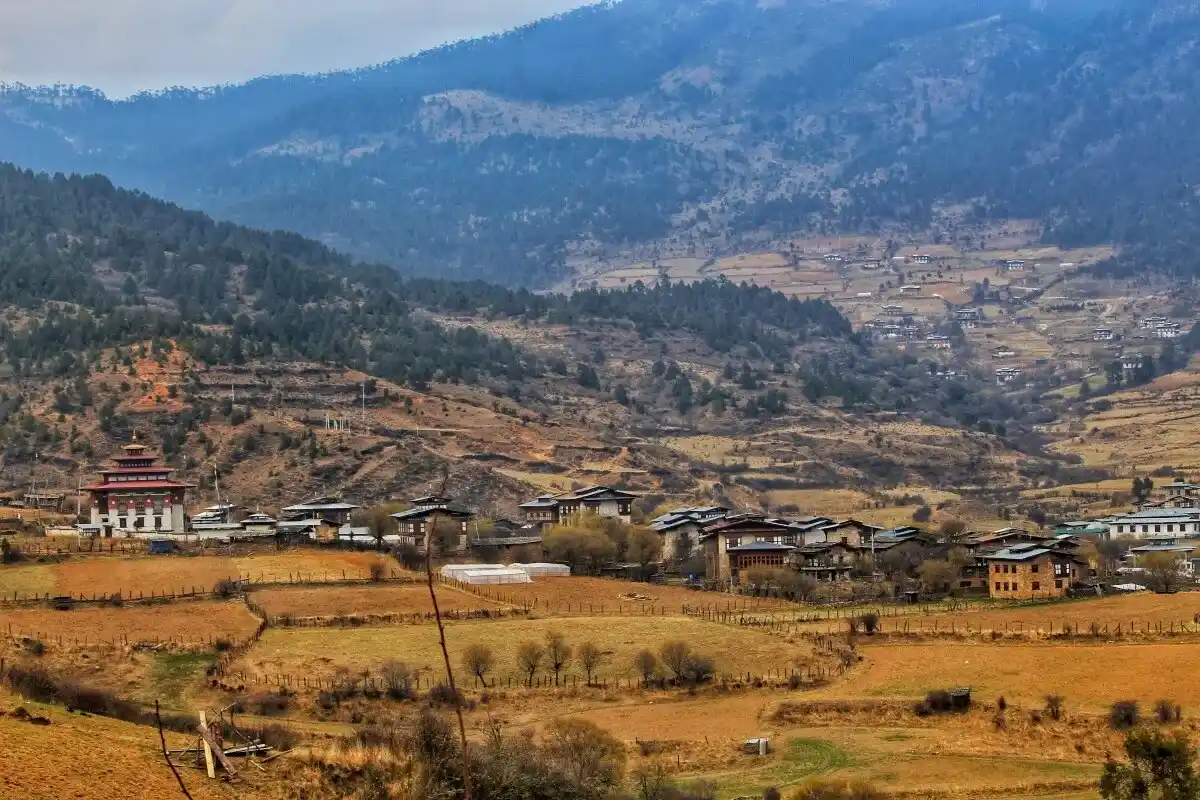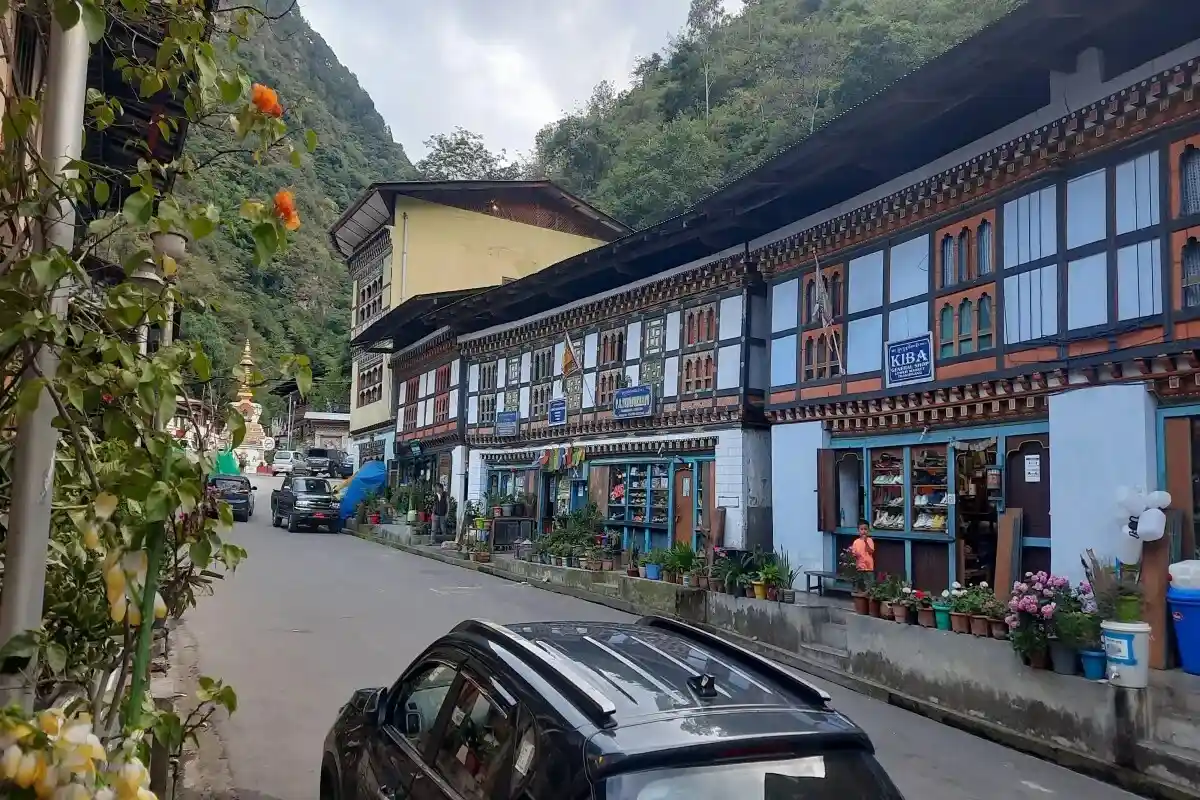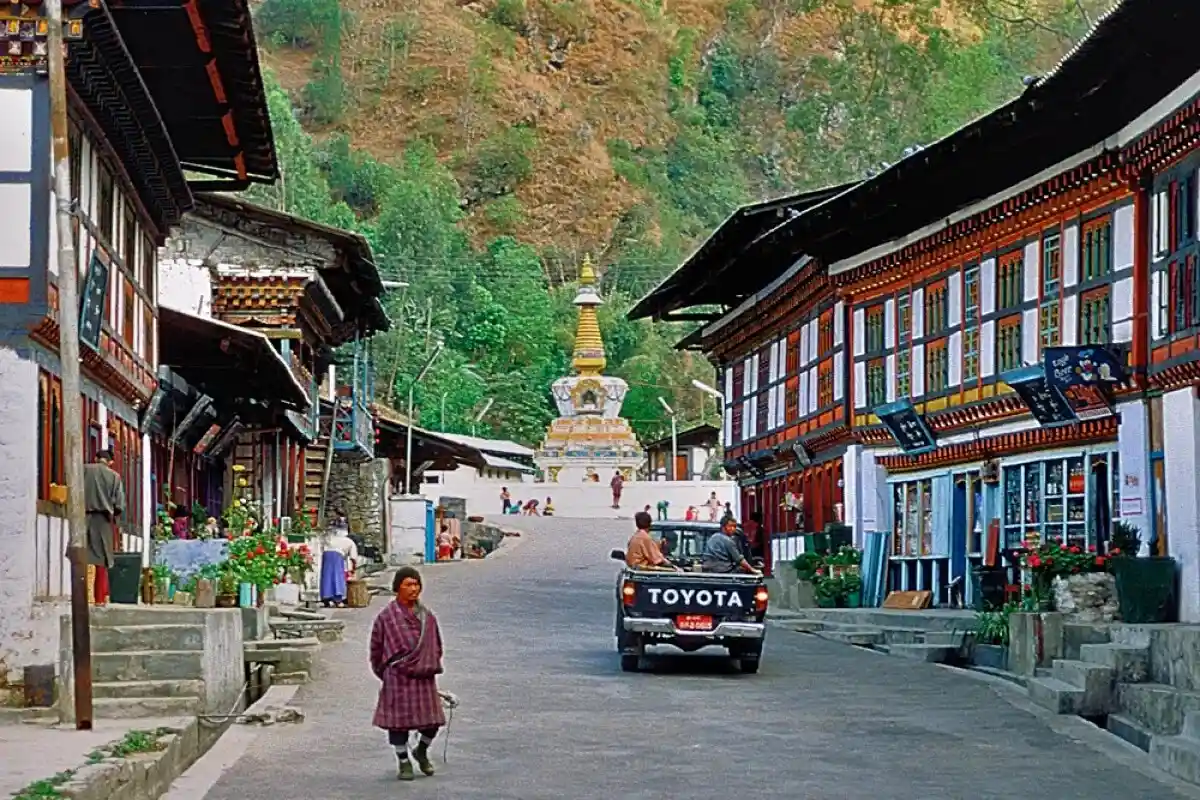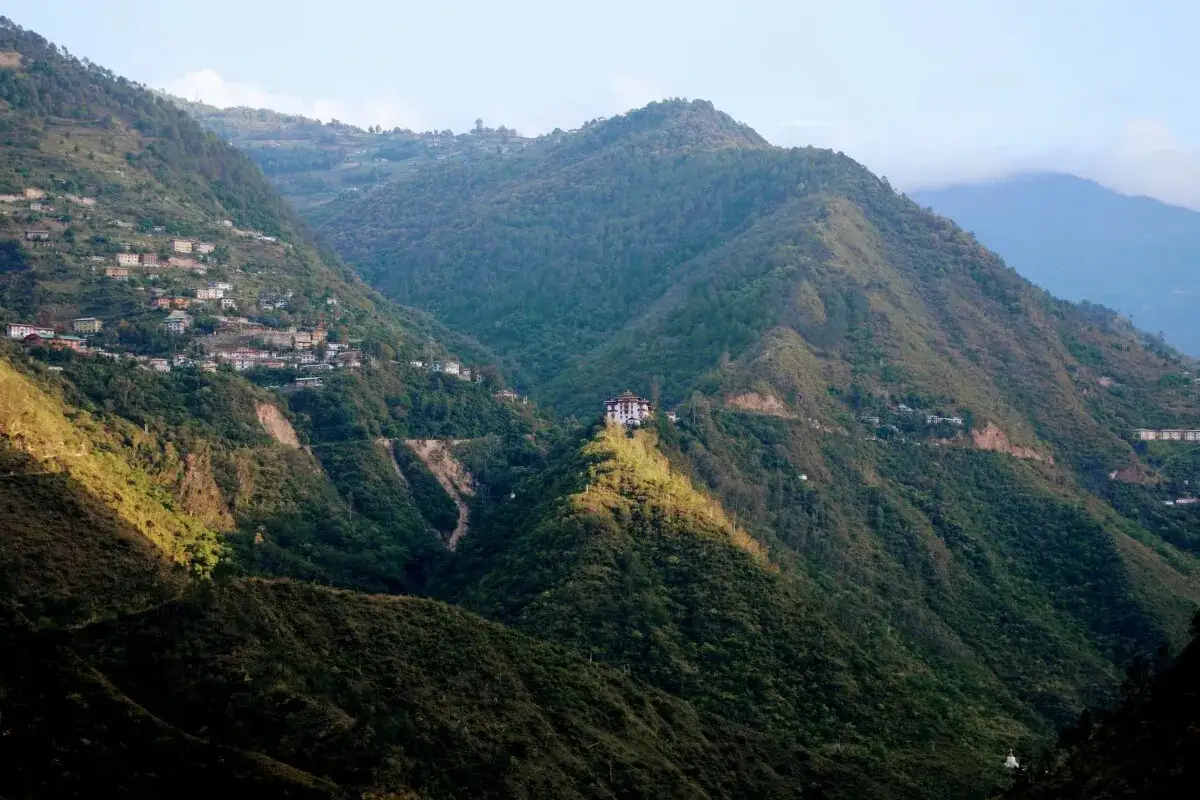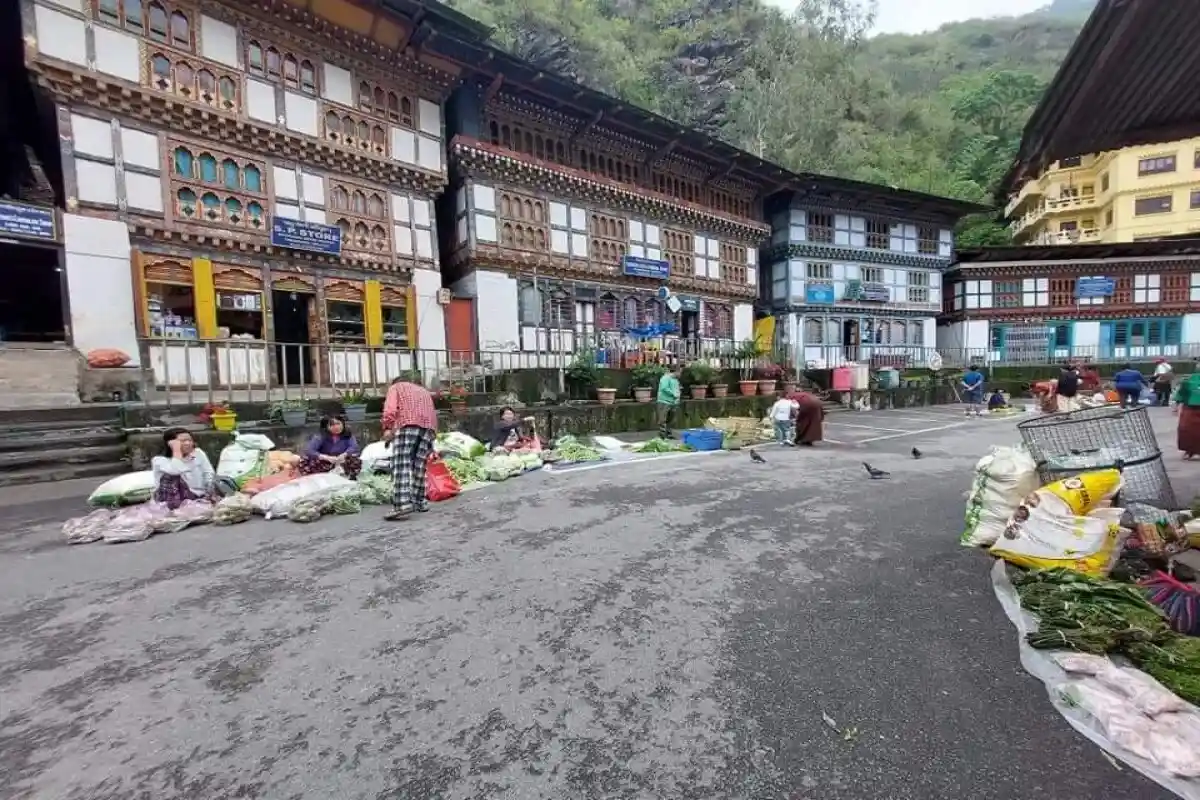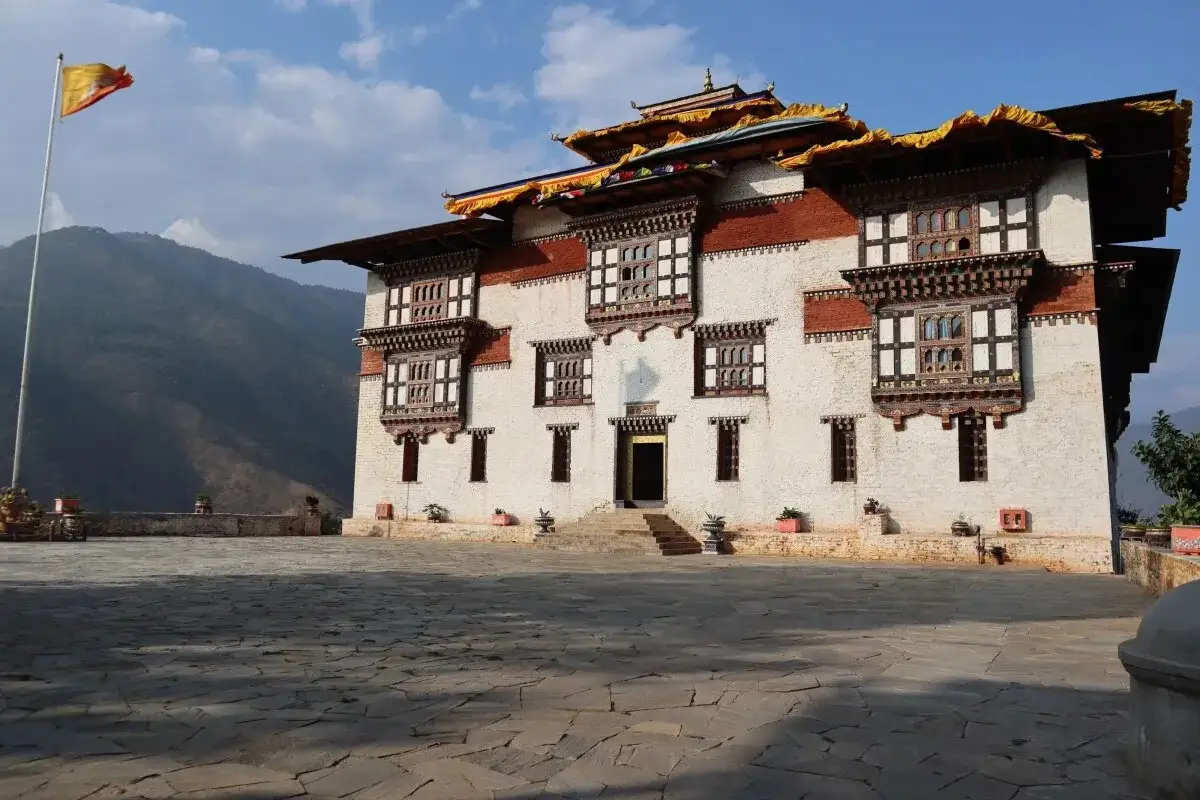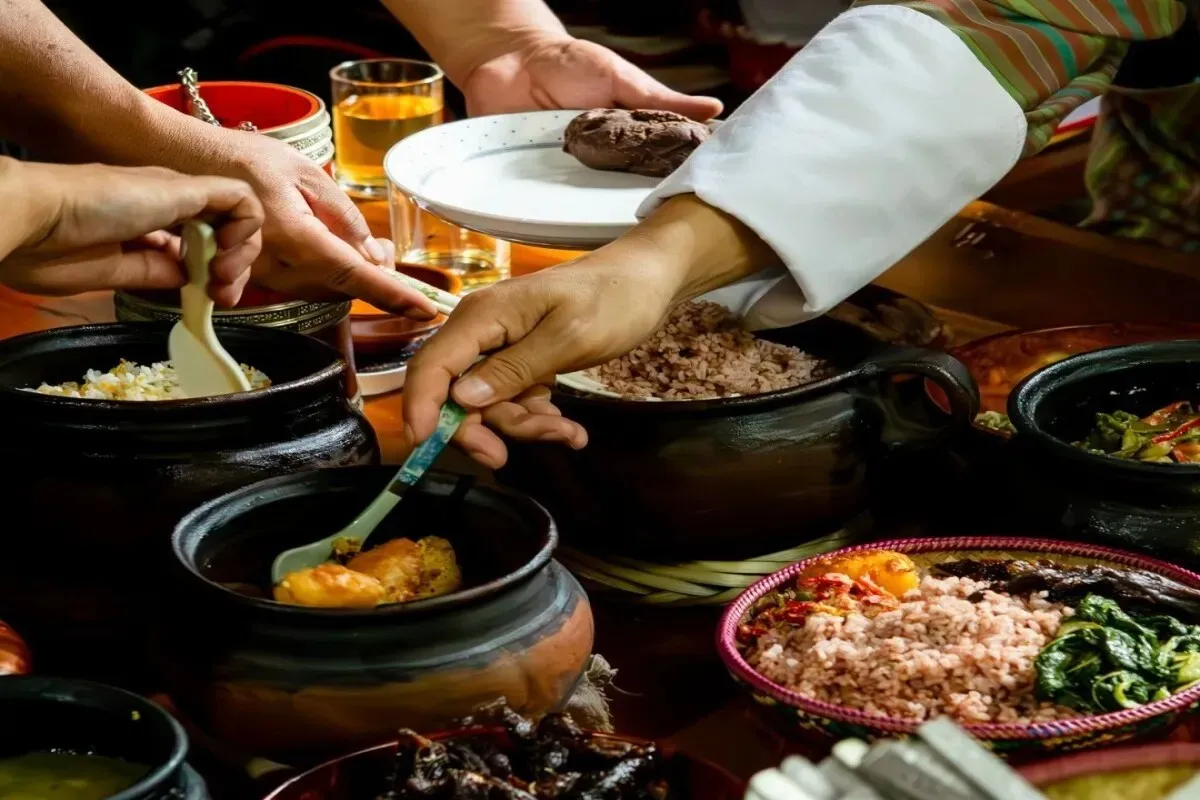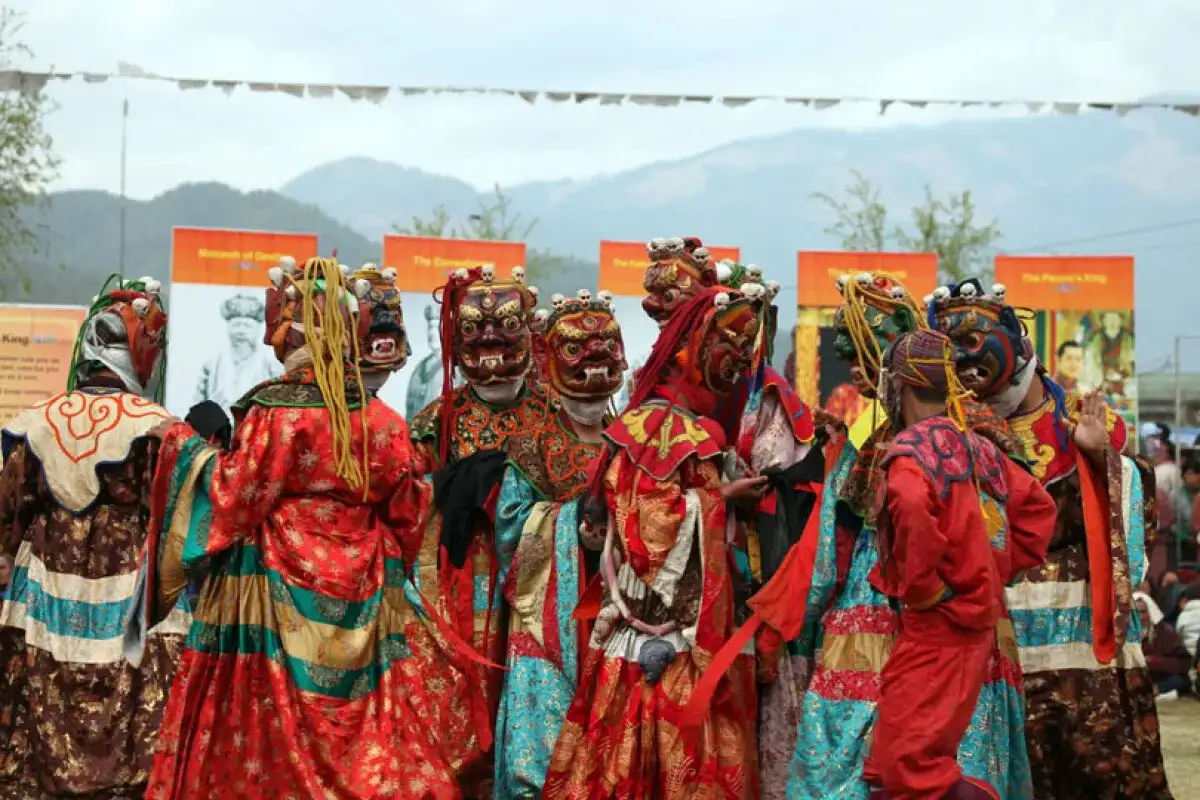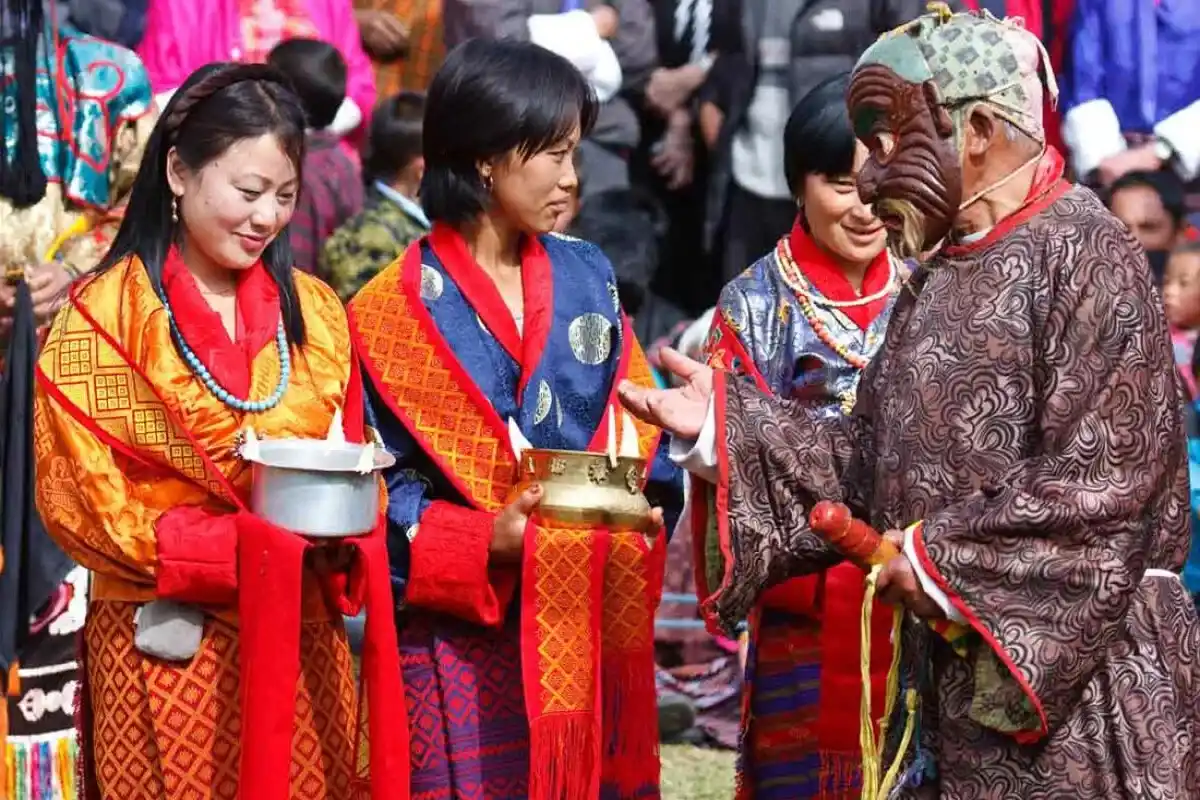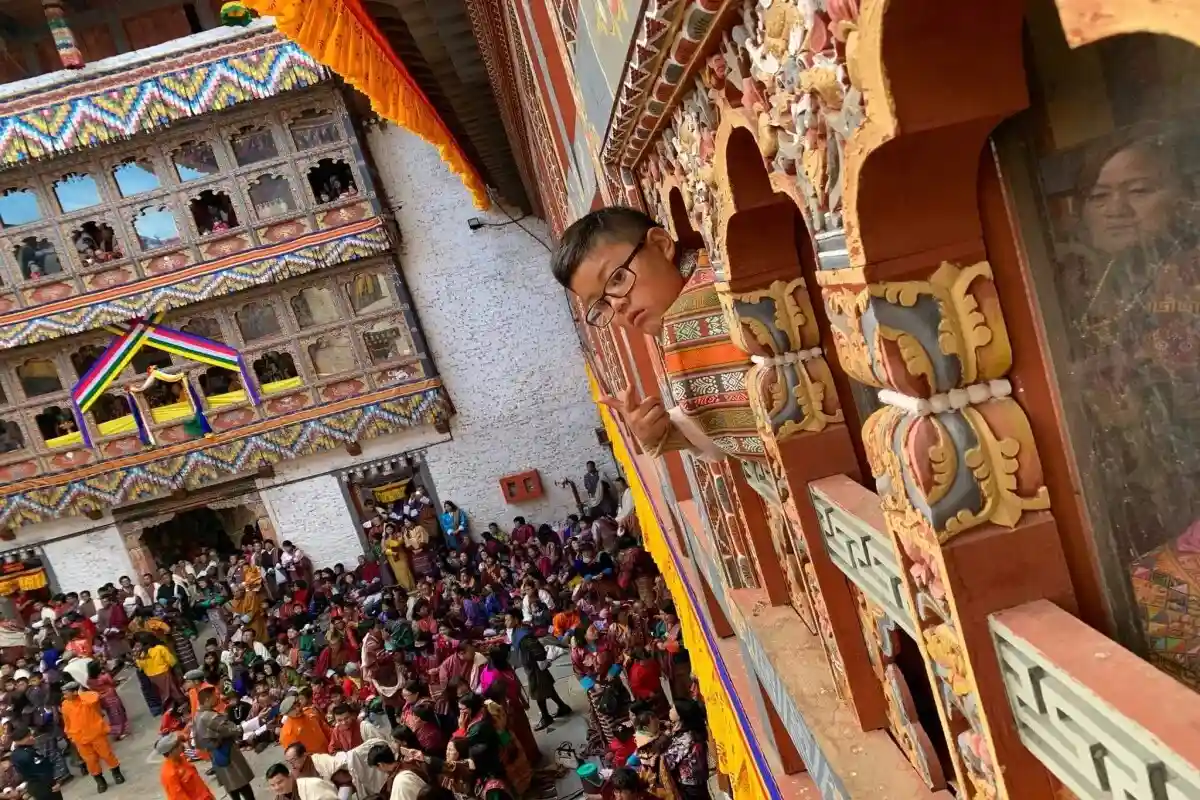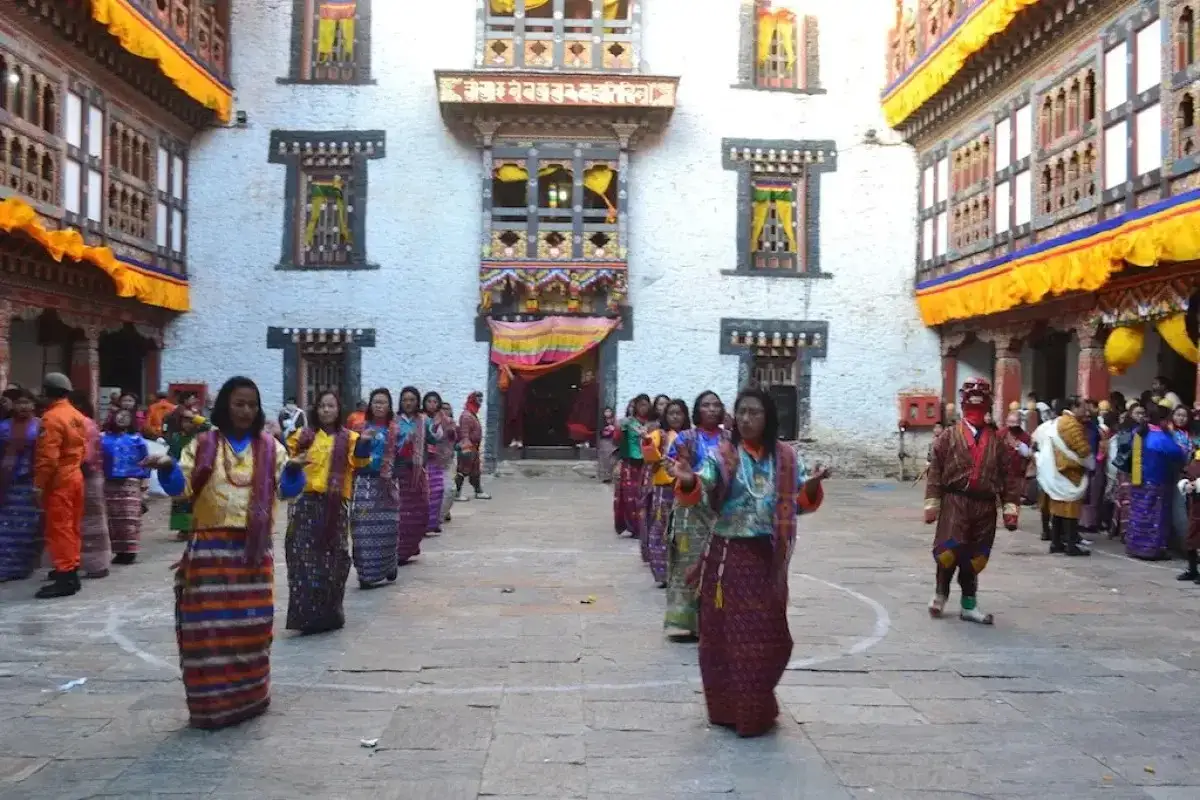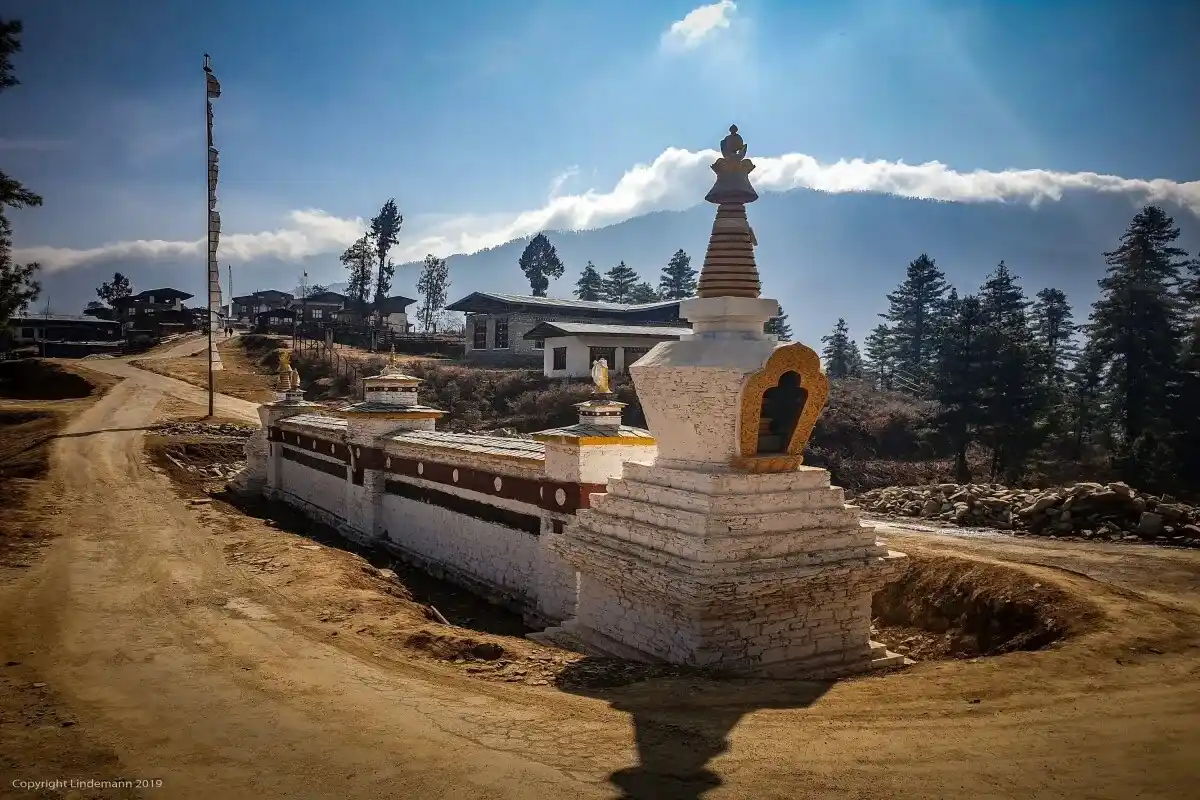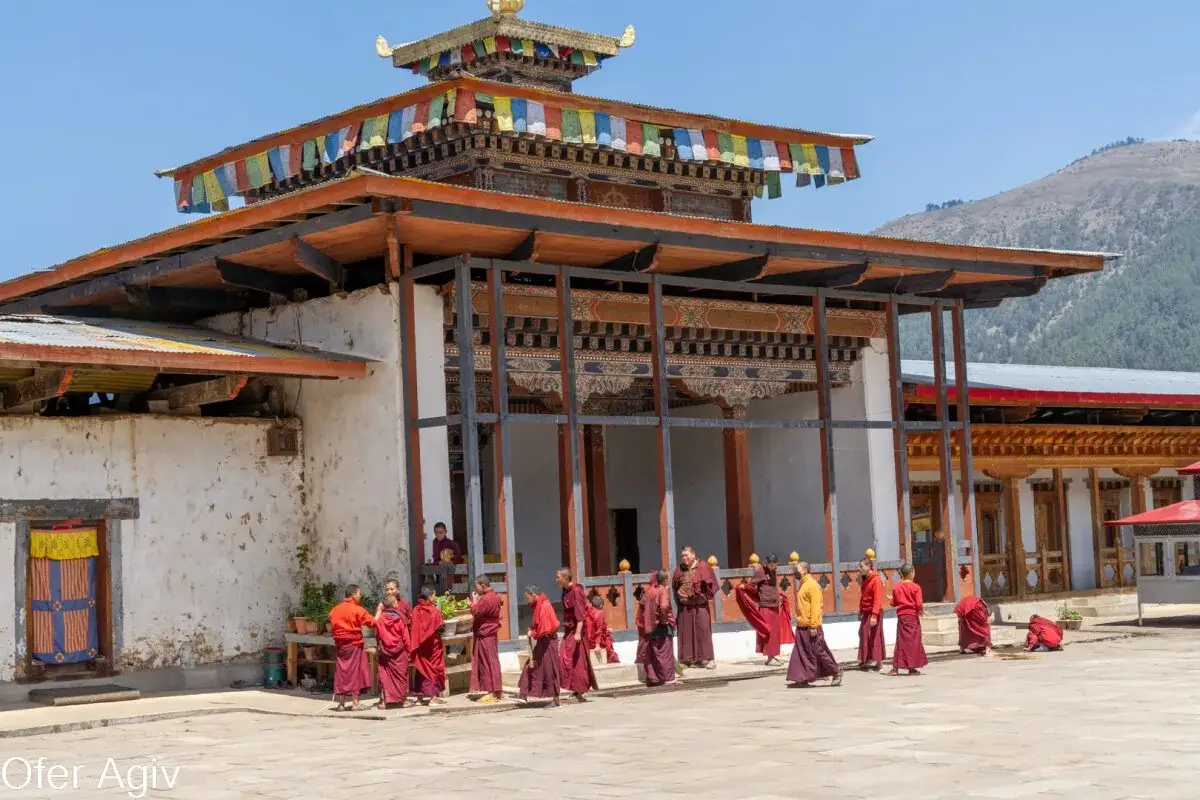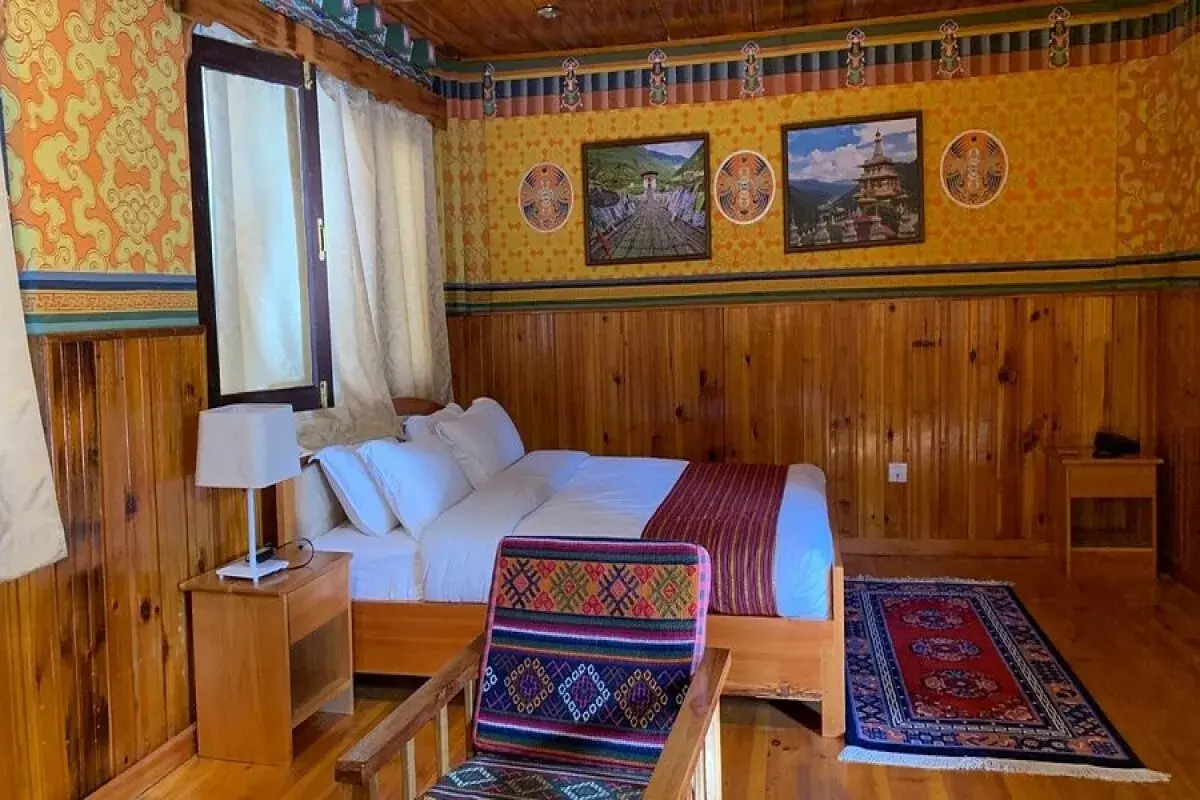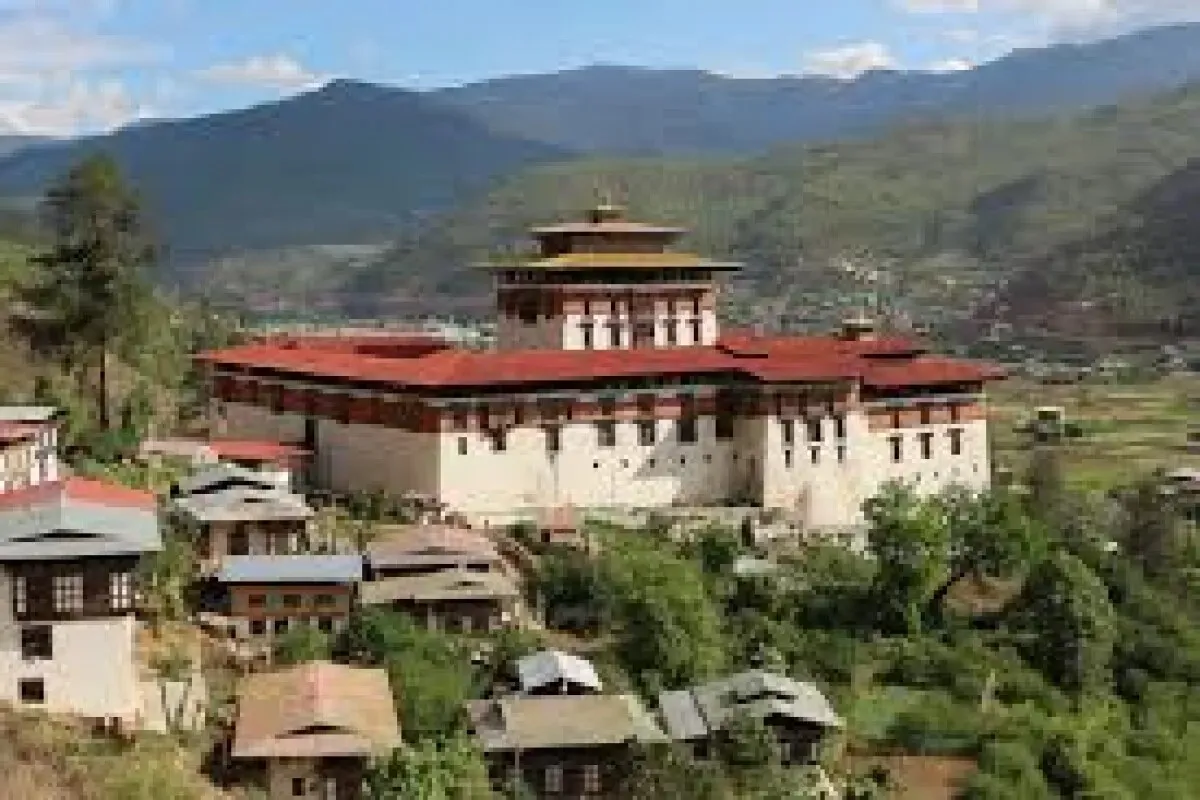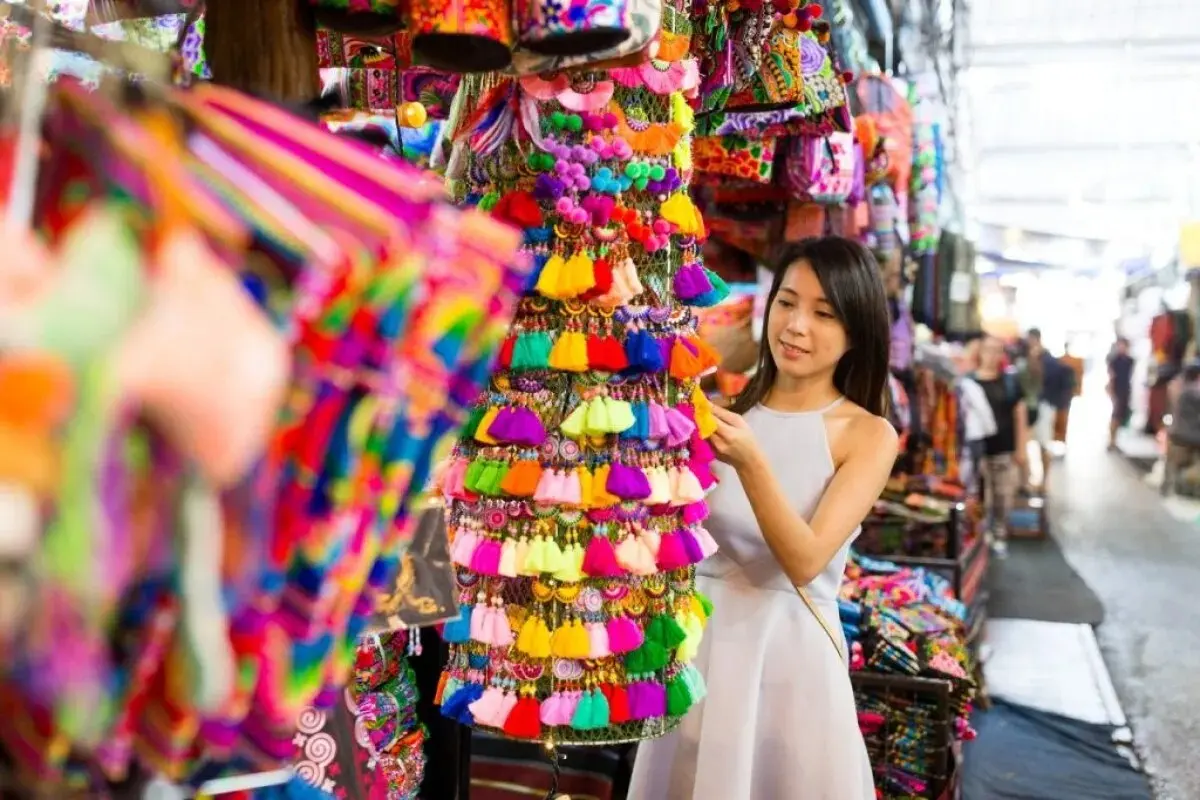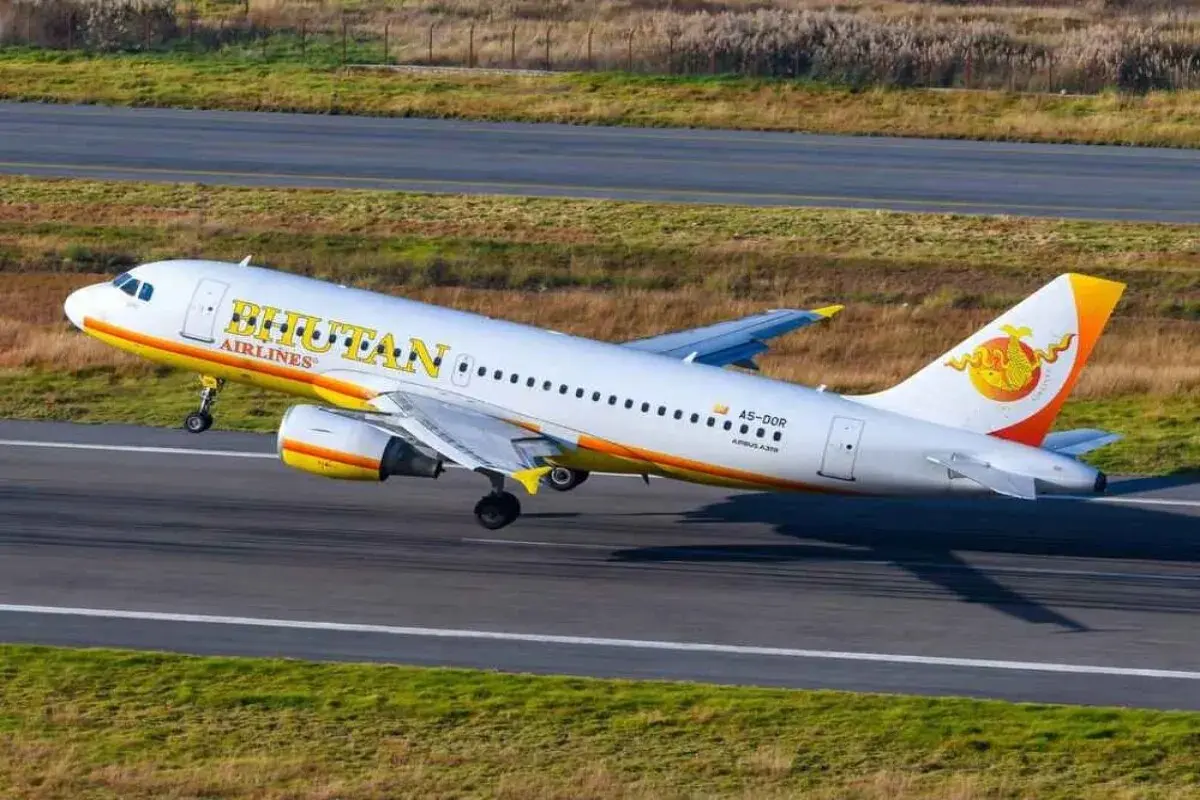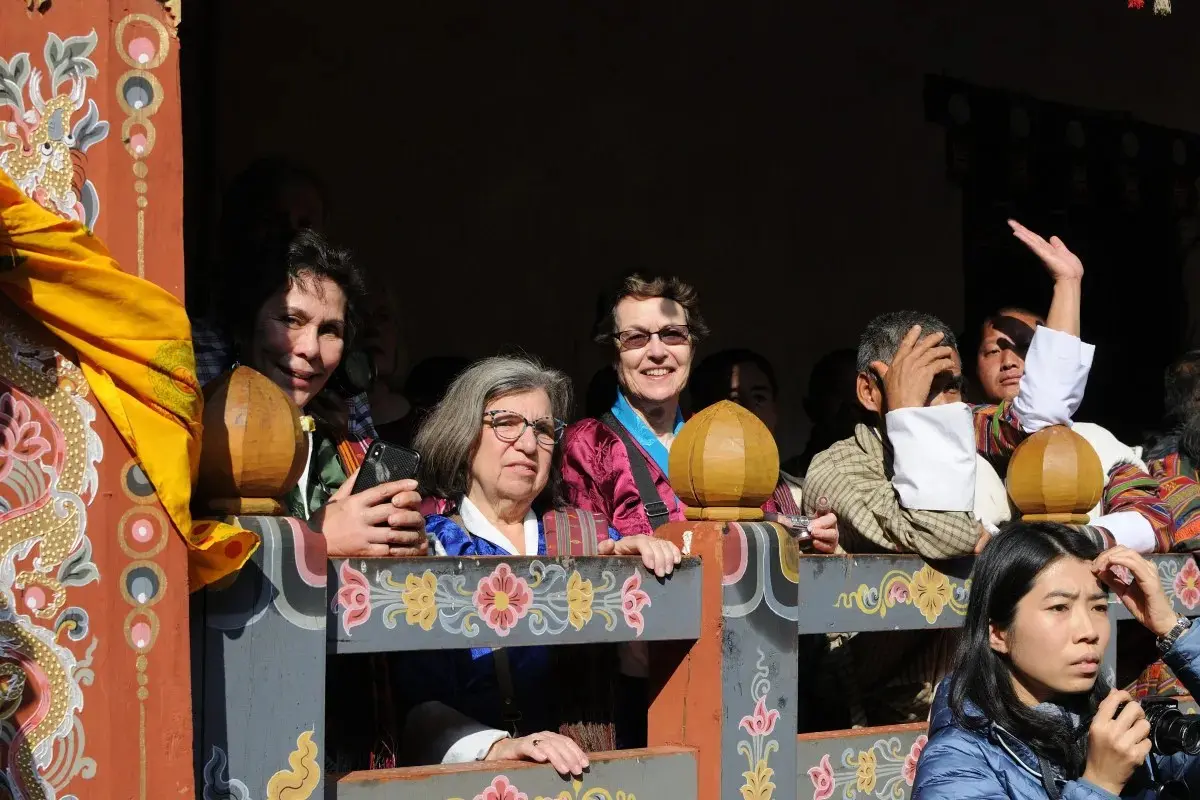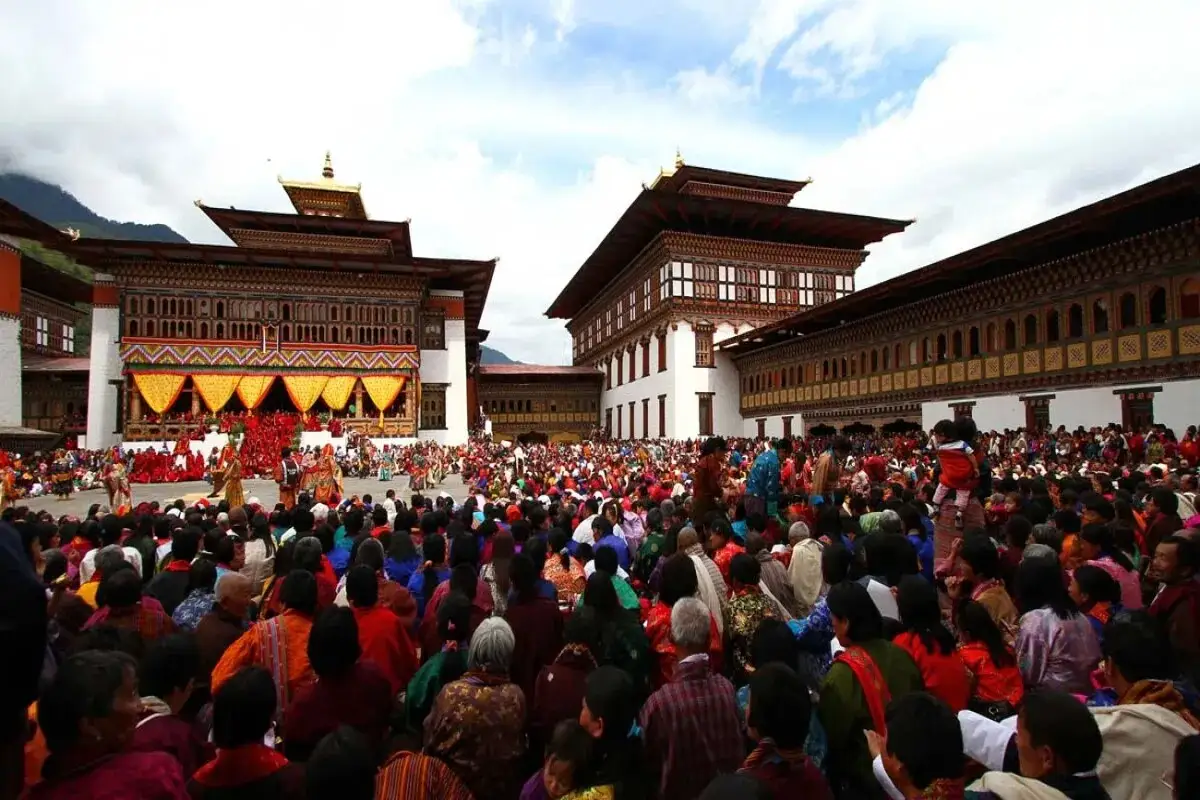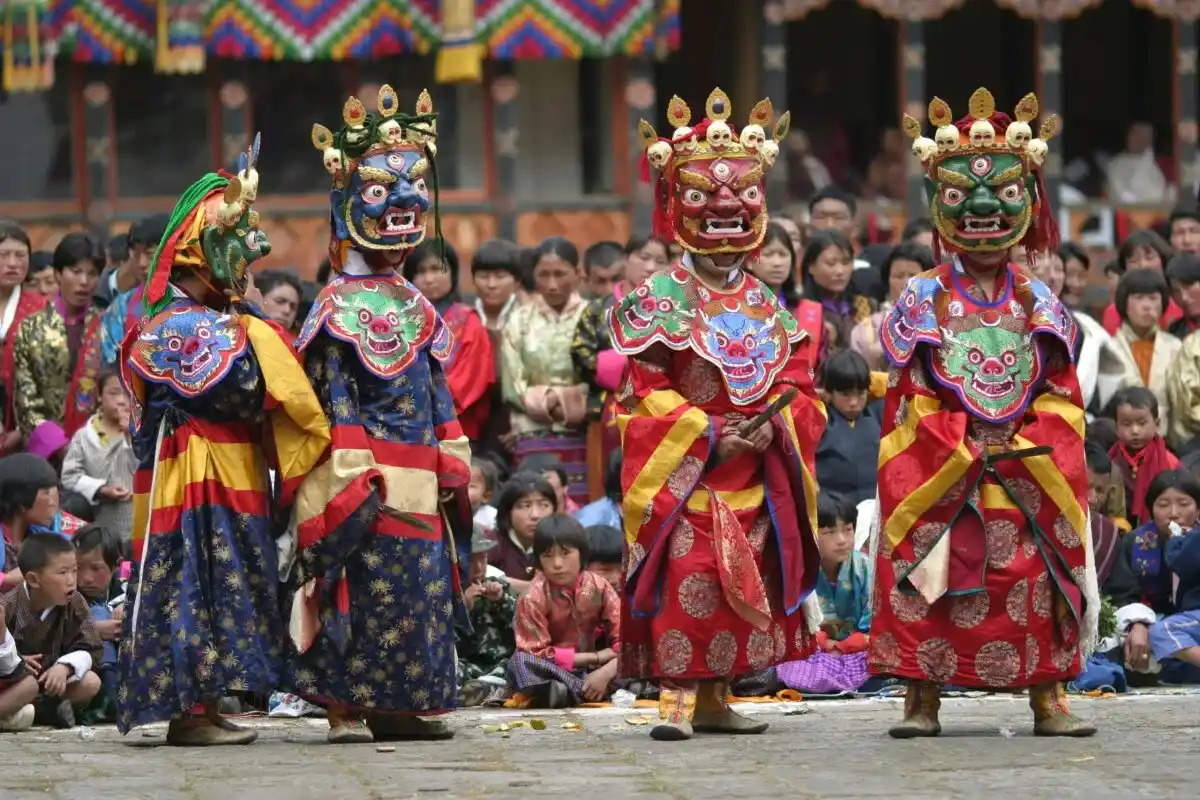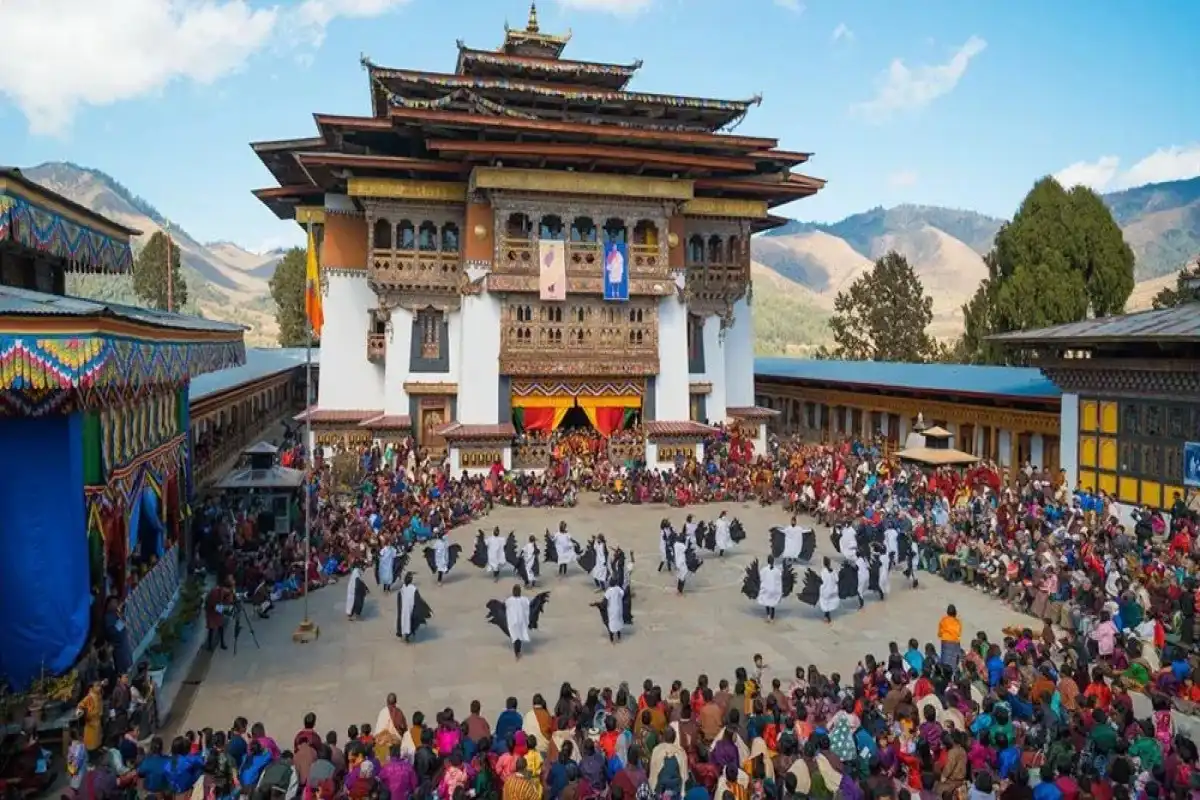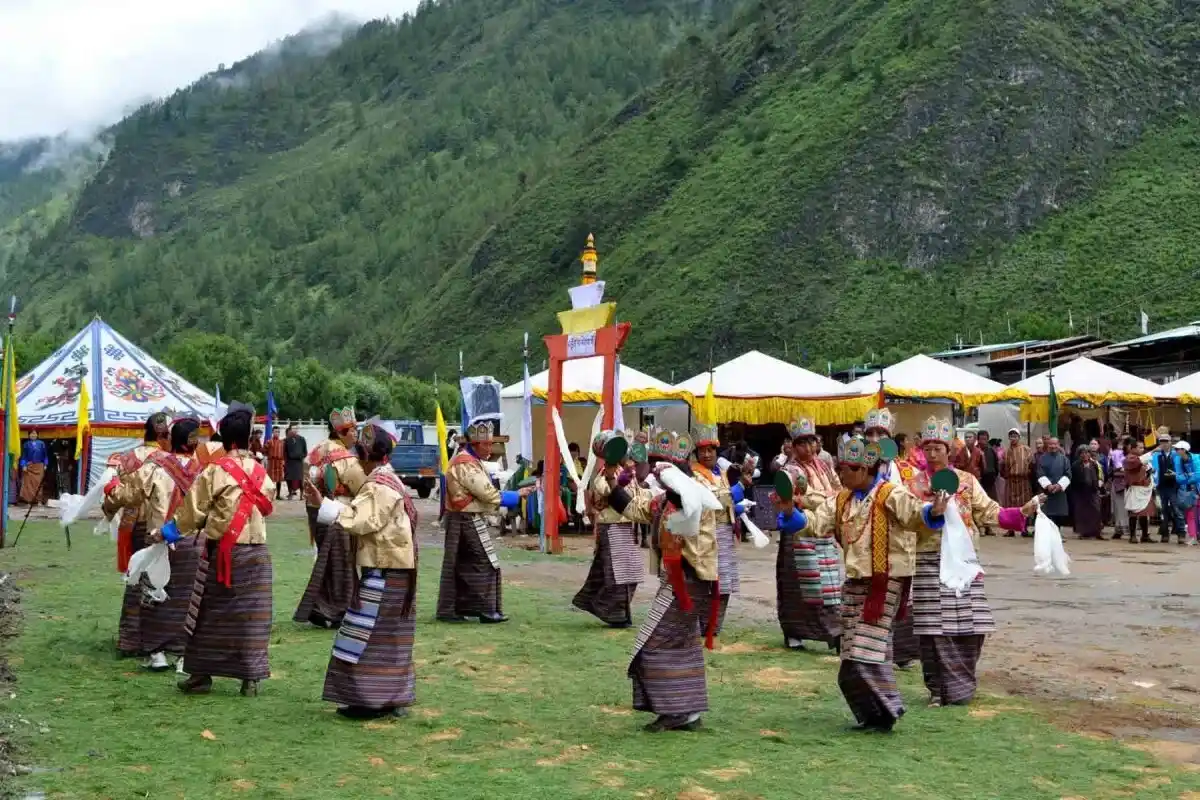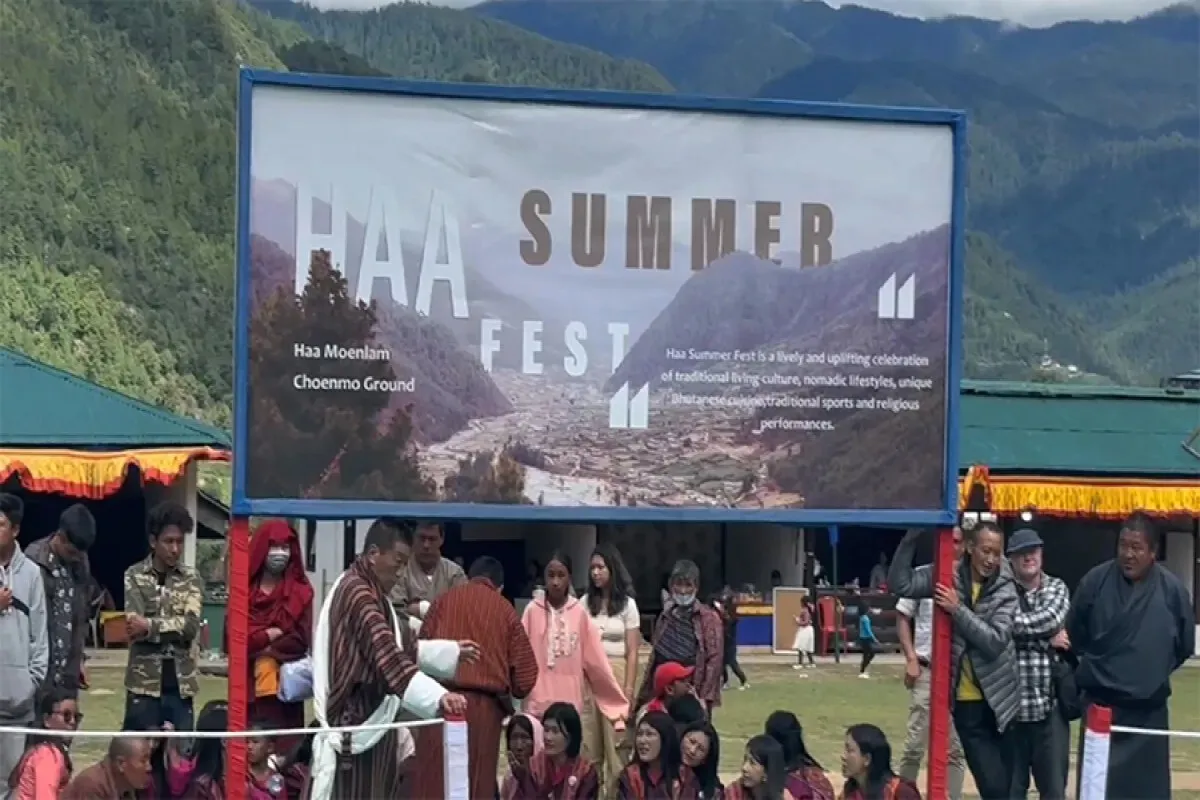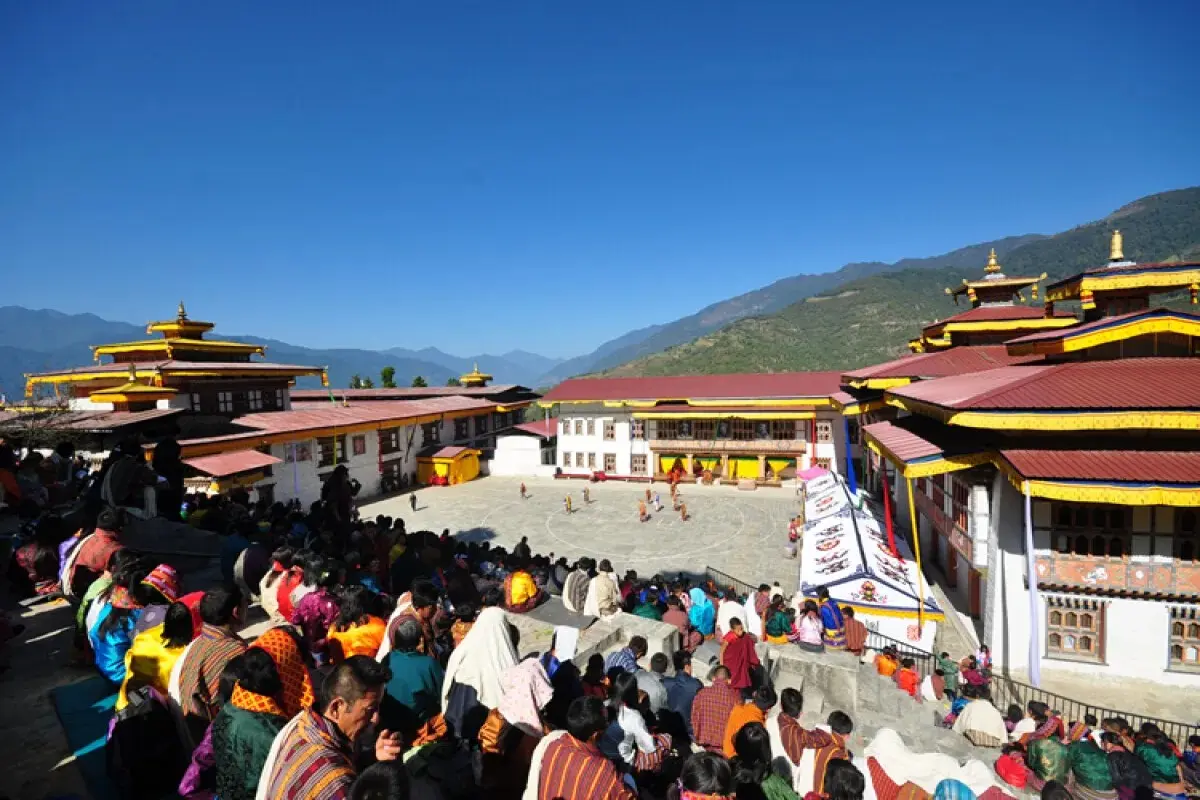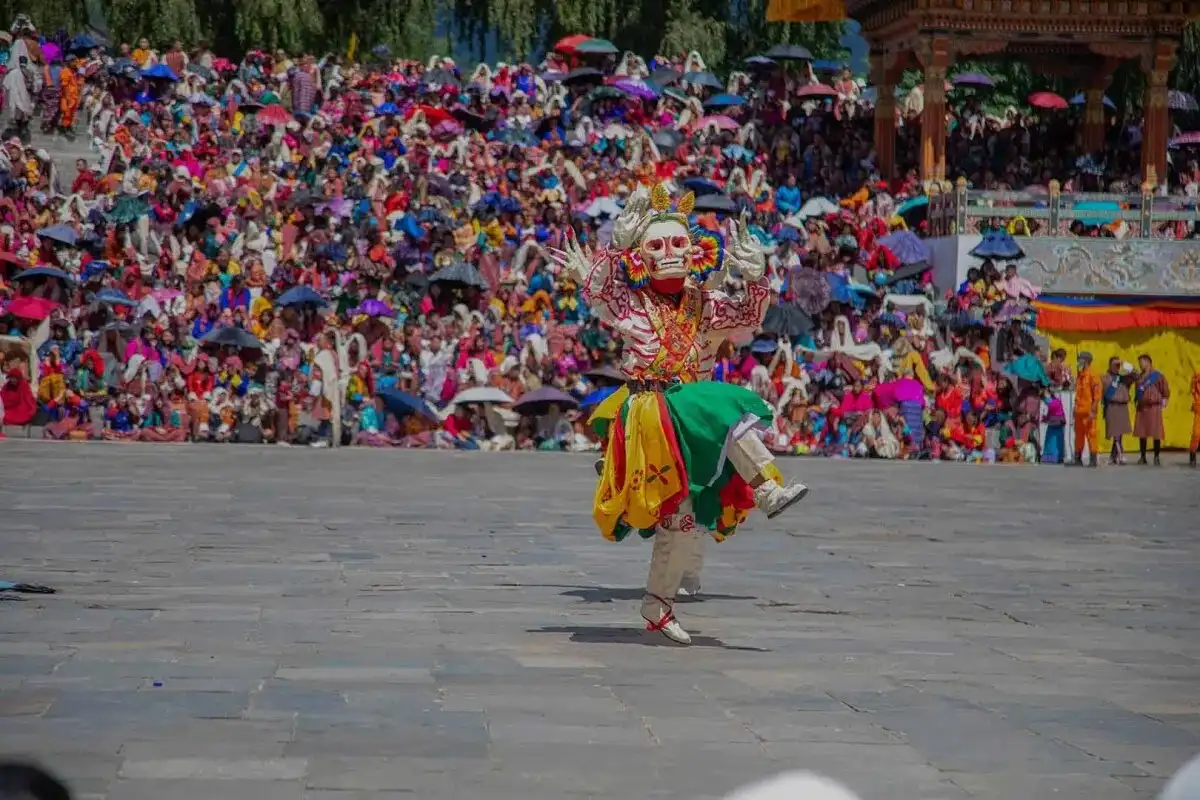Tashigang Tsechu Festival Tour - 13 Days
This is a unique 13-day cultural journey into the mystical landscapes of Bhutan and an opportunity to experience the fantastic Tashigang Tsechu Festival in the remote east of the kingdom. This complete tsechu festival tour will give you an unmatched chance of experiencing one of the most authentic and colorful religious festivals of Bhutan, while you get to see the lesser-explored jewels of Eastern Bhutan that have not been touched by commercial tourism.
Highlights
- Witnessing a Masked Dance Performance
- Exploring Eastern Bhutan and Interacting with Locals
- Meditation and Spiritual Practice
- Exploring Major Cities like Paro and Thimphu
- Visit to Ancient Monasteries and Dzongs
- Tashigang Dzong Architectural Tour
Trip Overview
Tashigang Tsechu Festival is the spiritual core of Bhutanese culture, where ancient traditions of Buddhism are revived through the hypnotizing masked dances, religious ceremonies, and a local celebration. The authenticity of the rural Eastern Bhutan is an ideal setting for this transformational cultural experience in the traditional villages where centuries-old customs are still followed, and the hospitality of the local people gives those who seek a genuine cultural immersion in the Last Shangri-La unforgettable memories.
Highlights of Tashigang Tsechu Festival Tour
You will get to explore the local culture such as witnessing masked dance,explore eastern Bhutan . Also you will get a chance for a spiritual practices and meditations.
Witnessing a Masked Dance Performance
Enjoy the magnificent Cham dances at Tashigang Dzong, where monks dance in colorful and magnificent masked costumes. These religious dances symbolize the victory between the good and the evil, and every dance has some spiritual meaning handed over through generations by the Buddhist masters in this isolated kingdom of the Himalayas.
Exploring Eastern Bhutan and Interacting with Locals
Experience the real rural life of Eastern Bhutan by visiting the traditional villages, weaving centers, and local markets. Meet friendly locals with centuries-old traditions, get to know about traditional textile manufacturing, and enjoy the real Bhutanese hospitality in this culturally rich area.
Meditation and Spiritual Practice
Attend meditation practices in ancient monasteries and holy places during your trip. The Eastern region of Bhutan, with its tranquil mountain scenery and spiritual aura, creates the best possible conditions to experience inner peace and reconnect with the Buddhist teachings in their very natural habitat.
Exploring Major Cities like Paro and Thimphu
Travel in the most important cultural centers of Bhutan, visiting all the iconic places such as the Buddha Dordenma statue, Tashichho Dzong, and traditional markets. Get the feel of the ancient traditions combined with the modern development, which defines the current urban life of the Bhutanese people.
Visit to Ancient Monasteries and Dzongs
Visit wonderful fortress-monasteries such as Punakha Dzong, Trongsa Dzong, and the ancient Tashigang Dzong. These architectural masterpieces reflect the traditional Bhutanese craftsmanship and contain valuable religious artifacts, and they are actively used as the centers of Buddhist education and administration.
Tashigang Dzong Architectural Tour
Find out the marvellous structures of Tashigang Dzong, which is located on top of the Drangme Chu river. This huge fortress is the administrative and religious hub of Eastern Bhutan and has a traditional form of construction. In it, you find important religious relics and administrative offices.
Significance of the Tashigang Tsechu Festival Tour
Tashigang Tsechu Festival is a very significant festival because it is one of the most important religious festivals in Eastern Bhutan, which has been practiced for centuries with Buddhist traditions. This religious festival is performed to fulfill several functions in the Bhutanese culture: purification of the spirits, social cohesion, maintenance of culture, and passing religious knowledge through symbolic acts and rituals.
The festival is also important in maintaining the cultural identity of Eastern Bhutan in terms of unique textiles, architecture, and dialect. Attending this festival helps in preserving the culture and also gives the visitor a glimpse of the living culture that characterizes the Bhutanese civilization. By attending this holy festival, you will help to keep these old traditions alive, and at the same time, you will have the transformational experience of being connected with ancient wisdom and spiritual practices.
What Makes Tashigang Tsechu So Special?
Tashigang Tsechu is unique in that it is held in a real rural environment and in a small community where people hold on to their traditions, and they have not been much influenced by modernity. The festival also includes special masked dances that are only practiced in the Buddhist heritage of Eastern Bhutan, and these dances are not practiced in other parts. The magnificent mountainous background of the Eastern Himalayas, the traditional architecture, and the local hospitality make the stay of the visitor an unmatched cultural experience with a real spiritual touch.
Conclusion
The Tashigang Tsechu Festival tour offers an extraordinary opportunity to experience authentic Bhutanese Buddhist culture in Eastern Bhutan's pristine mountain setting. This 13-day journey in Bhutan offers spiritual festival participation with cultural exploration, creating beautiful memories through interactions with local people and participation in sacred traditions.
You will get to witness spectacular masked dances at Tashigang Dzong while exploring ancient monasteries and traditional villages, and every moment provides deep cultural immersion and spiritual enrichment. The authentic atmosphere of Eastern Bhutan, combined with warm local hospitality and unchanged traditional customs, offers rare insights into living Himalayan Buddhist civilization.Your participation supports cultural preservation and sustainable tourism of Bhutan while providing life-changing experiences that connect ancient wisdom with contemporary spiritual seeking. Join us for this remarkable journey into Bhutan's spiritual heartland and discover why the kingdom remains the Last Shangri-La.
Tashigang Tsechu Festival is the spiritual core of Bhutanese culture, where ancient traditions of Buddhism are revived through the hypnotizing masked dances, religious ceremonies, and a local celebration. The authenticity of the rural Eastern Bhutan is an ideal setting for this transformational cultural experience in the traditional villages where centuries-old customs are still followed, and the hospitality of the local people gives those who seek a genuine cultural immersion in the Last Shangri-La unforgettable memories.
Highlights of Tashigang Tsechu Festival Tour
You will get to explore the local culture such as witnessing masked dance,explore eastern Bhutan . Also you will get a chance for a spiritual practices and meditations.
Witnessing a Masked Dance Performance
Enjoy the magnificent Cham dances at Tashigang Dzong, where monks dance in colorful and magnificent masked costumes. These religious dances symbolize the victory between the good and the evil, and every dance has some spiritual meaning handed over through generations by the Buddhist masters in this isolated kingdom of the Himalayas.
Exploring Eastern Bhutan and Interacting with Locals
Experience the real rural life of Eastern Bhutan by visiting the traditional villages, weaving centers, and local markets. Meet friendly locals with centuries-old traditions, get to know about traditional textile manufacturing, and enjoy the real Bhutanese hospitality in this culturally rich area.
Meditation and Spiritual Practice
Attend meditation practices in ancient monasteries and holy places during your trip. The Eastern region of Bhutan, with its tranquil mountain scenery and spiritual aura, creates the best possible conditions to experience inner peace and reconnect with the Buddhist teachings in their very natural habitat.
Exploring Major Cities like Paro and Thimphu
Travel in the most important cultural centers of Bhutan, visiting all the iconic places such as the Buddha Dordenma statue, Tashichho Dzong, and traditional markets. Get the feel of the ancient traditions combined with the modern development, which defines the current urban life of the Bhutanese people.
Visit to Ancient Monasteries and Dzongs
Visit wonderful fortress-monasteries such as Punakha Dzong, Trongsa Dzong, and the ancient Tashigang Dzong. These architectural masterpieces reflect the traditional Bhutanese craftsmanship and contain valuable religious artifacts, and they are actively used as the centers of Buddhist education and administration.
Tashigang Dzong Architectural Tour
Find out the marvellous structures of Tashigang Dzong, which is located on top of the Drangme Chu river. This huge fortress is the administrative and religious hub of Eastern Bhutan and has a traditional form of construction. In it, you find important religious relics and administrative offices.
Significance of the Tashigang Tsechu Festival Tour
Tashigang Tsechu Festival is a very significant festival because it is one of the most important religious festivals in Eastern Bhutan, which has been practiced for centuries with Buddhist traditions. This religious festival is performed to fulfill several functions in the Bhutanese culture: purification of the spirits, social cohesion, maintenance of culture, and passing religious knowledge through symbolic acts and rituals.
The festival is also important in maintaining the cultural identity of Eastern Bhutan in terms of unique textiles, architecture, and dialect. Attending this festival helps in preserving the culture and also gives the visitor a glimpse of the living culture that characterizes the Bhutanese civilization. By attending this holy festival, you will help to keep these old traditions alive, and at the same time, you will have the transformational experience of being connected with ancient wisdom and spiritual practices.
What Makes Tashigang Tsechu So Special?
Tashigang Tsechu is unique in that it is held in a real rural environment and in a small community where people hold on to their traditions, and they have not been much influenced by modernity. The festival also includes special masked dances that are only practiced in the Buddhist heritage of Eastern Bhutan, and these dances are not practiced in other parts. The magnificent mountainous background of the Eastern Himalayas, the traditional architecture, and the local hospitality make the stay of the visitor an unmatched cultural experience with a real spiritual touch.
Conclusion
The Tashigang Tsechu Festival tour offers an extraordinary opportunity to experience authentic Bhutanese Buddhist culture in Eastern Bhutan's pristine mountain setting. This 13-day journey in Bhutan offers spiritual festival participation with cultural exploration, creating beautiful memories through interactions with local people and participation in sacred traditions.
You will get to witness spectacular masked dances at Tashigang Dzong while exploring ancient monasteries and traditional villages, and every moment provides deep cultural immersion and spiritual enrichment. The authentic atmosphere of Eastern Bhutan, combined with warm local hospitality and unchanged traditional customs, offers rare insights into living Himalayan Buddhist civilization.Your participation supports cultural preservation and sustainable tourism of Bhutan while providing life-changing experiences that connect ancient wisdom with contemporary spiritual seeking. Join us for this remarkable journey into Bhutan's spiritual heartland and discover why the kingdom remains the Last Shangri-La.
Short Itinerary
Arrive in Paro and transfer to Thimphu; traditional welcome dinner and orientation.
Thimphu sightseeing -Tashichho Dzong, Buddha Dordenma, Memorial Chorten, and evening walk.
Drive to Punakha via Dochula Pass,visit Punakha Dzong.
Hike to Khamsum Yulley Namgyal Chorten and visit Chimi Lhakhang
Drive to Trongsa via Wangdue,visit Trongsa Dzong and cultural museum.
Drive to Bumthang,visit Jakar Dzong, Jambay Lhakhang, and Kurje Lhakhang.
Day excursion to Ura Valley,explore temples and village life.
Drive to Tashigang over Thrumshing La Pass,evening festival briefing.
Explore Tashigang Dzong, local markets, and cultural interactions.
Attend Tashigang Tsechu Festival Day 1 – masked dances and rituals.
Tsechu Festival Day 2 – witness Thongdrel unfurling and farewell rituals.
Drive to Gangtey Valley,visit conservation center and enjoy serene landscape.
Return to Paro for departure; optional last sightseeing or shopping.
Tashigang Tsechu Festival Tour Itinerary
On arrival at Paro International Airport, you will be received by our experienced local guide and driver, who will take you around during your cultural Bhutan tour. The drive to Thimphu is a scenic one, and it takes about 1.5 hours as the road passes through the beautiful landscapes of the Paro valley.
We will move you to the unique capital city of Bhutan, Thimphu, which is a mixture of ancient traditions and modern facilities. Arrive at your hotel and spend the rest of the day at leisure, giving time to acclimatize to the altitude and cultural adjustment. The evening will include a briefing of your coming tsechu festival itinerary with a traditional Bhutanese welcome dinner of local delicacies such as ema datshi (chilies with cheese), red rice, and butter tea. You will stay overnight in the Thimphu hotel and rest, getting ready to explore the city fully the following day.
Start the extensive Thimphu sightseeing by getting familiarized with the most important cultural and religious objects of the city. Begin with Tashichho Dzong, the fortress-monastery which combines government offices with the central monk body, and displays a traditional Bhutanese architecture of intricate woodwork, all done without the use of nails.
Then, we will see the impressive Buddha Dordenma statue, a 169-foot bronze statue that overlooks the Thimphu valley and contains more than 100,000 other Buddha statues. You will be able to visit the National Memorial Chorten, constructed in honour of the third King, and you will find people doing a daily circumambulation and prayer ritual.In the evening, explore Thimphu's main street with opportunities for souvenir shopping and observing local life in Bhutan's capital city.
We will drive to Punakha, over the Dochula Pass (elevation 3,100 meters), which is covered with 108 memorial chortens, and the panoramic view of the Himalayan peaks on a clear day. The pass offers great photography and views of the Bhutanese memorial tradition.
Our next resort will be the subtropical Punakha valley, which was once the capital and the winter seat of the body of monks of Bhutan. Then we shall visit the great and beautiful Punakha Dzong, which is also renowned as the Palace of Great Happiness, that is located where two rivers meet and is regarded as one of the most beautiful architectural works in Bhutan.Have your traditional meal and spend the night in a nice hotel or guesthouse, and relax in the calm atmosphere of the valley and subtropical climate.
On Day 4, there is a moderate hike to Khamsum Yulley Namgyal Chorten, a very beautiful temple constructed by the Queen Mother to bring peace and prosperity. The trek is about 2-3 hours up and down with sweeping vistas of the Punakha valley and Bhutanese farming.The next destination that we will visit is Chimi Lhakhang (Fertility Temple), dedicated to Lama Drukpa Kunley, who was called the Divine Madman. This temple is especially holy to couples who want to be blessed with fertility, and it symbolizes the peculiarities of Bhutanese Buddhist customs.
Day 5 will be a beautiful drive across the landscapes changing between sub-tropical valley and temperate forests to Wangdue Phodrang, where you will do some sightseeing and cultural exploration. It is a very old town that provides knowledge about Bhutanese architecture and the local traditions.
We will then proceed to Trongsa, which is historically important since it was the seat of power of the royal family in Bhutan and strategically located to dominate the ancient trade route between eastern and western Bhutan. The journey is about 5-6 hours across some of the finest wilderness in Bhutan.Visit the Trongsa Dzong's courtyards, temples, and museums that showcase Bhutanese culture, history, and the roots of the Wangchuck royal dynasty. You will stay at a local hotel, preparing for tomorrow's journey into the Bumthang valley.
This morning, we set off to the holy Bumthang Valley, the spiritual centre of Bhutan. The trip through the mountainous topography of central Bhutan provides breathtaking views and the chance to see the way of life in the villages.
In Bumthang, you will go to Jakar Dzong (Castle of the White Bird), the administrative and religious centre of the region. Visit the local monasteries such as Jambay Lhakhang, one of Bhutan's oldest temples constructed in 659 A.D, and Kurje Lhakhang, where Guru Rinpoche meditated.The traditional villages of Bumthang provide a chance to meet local families and watch the traditional crafts such as weaving and woodworking. You will stay in a comfortable guesthouse, having a traditional dinner with local specialties.
Our day excursion will be to the beautiful Ura Valley, which is one of the four valleys of Bumthang, with its traditional stone houses, old temples, and the magnificent views of the mountains. You can visit old temples and holy places, or you can also communicate with local families who discuss their traditional way of life, farming, and Buddhist beliefs.We will go back to Bumthang to stay overnight with a traditional dinner and night relaxation to process the day's cultural experience and get ready for the next day's trip to Eastern Bhutan.
We will drive 6-7 hours to Tashigang in Eastern Bhutan, over the spectacular Thrumshing La Pass at 3,750 meters altitude. Arrive in Tashigang and stay in local accommodation, and have some leisure time in preparation of the activities of the coming festival. During the evening, we’ll have a briefing on the tsechu program and cultural norms on how to participate in the holy festivals respectfully.
Today, we will explore Tashigang Dzong, where you can visit the vibrant local market, where vendors from remote villages sell traditional textiles, handicrafts, and local produce. You will also have the chance to interact with local artisans and families who explain their customs, beliefs, and way of life.
A bit of preparation is suggested to be done before the festival tomorrow. Have a traditional dinner and cultural briefing on the spiritual meaning of the performances of masked dances and religious ceremonies that will follow.
It is the first day of the Tashigang Tsechu Festival, and there are amazing masked dances and cultural shows performed at Tashigang Dzong. You may also attend traditional rituals and ceremonies, which are spiritual blessings and cultural insights into Bhutanese Buddhism.
You will get a chance to take photos of the colorful costumes, traditional architecture, and dramatic mountain background. Festival festivities are followed by traditional music, dancing, and community celebration into the night.
You will get up early and observe the Thongdrel unfurling ceremony, at which a giant religious tapestry (16 Arhats Thongdrel) is unfurled in the morning. This holy art is considered to offer blessings and spiritual purification to every person who looks at it in devotion.
The last day of the celebration and partying ends this great spiritual event. You will be able to take blessings with high lamas and join community prayers.The end of the festival gives a chance to think about the deep cultural experiences and spiritual insights one gets having participating in this genuine Buddhist festival. Evening offers farewell rituals with the locals and the monastery authorities.
The 12th day will be the day when we leave Tashigang and go on the way to the lovely Gangtey Valley. This crystal clear glacial valley has breathtaking natural scenery and a serene environment that will enable you to contemplate your festival moments.You will be in a position to know about the conservation activities to preserve the black-necked cranes and other endangered wildlife, which rely on the protected ecosystems of Bhutan. You will be able to rest in cozy rooms with a traditional dinner and contemplation of your amazing adventure.
The final day will be the day of returning to the Paro International Airport through Wangdue Phodrang and Thimphu, and the activities of the day will be the last shopping and cultural visits, depending on your flight schedule and personal choice.
If you have time, you may do a final sightseeing in Paro, including visits to Paro Dzong or local temples. After that, we will transfer you to Paro International Airport with assistance from your guide for departure procedures.
Know Before You Travel
-
Best Time to Visit Bhutan for the Tsechu Festival:
Tashigang Tsechu Festival is held in autumn (September-November), and this is the best time to travel to Eastern Bhutan, because of the good weather conditions to explore the culture. These dates offer good visibility of mountains, pleasant weather, and reduced levels of rainfall, which make the outdoor festival activities and a beautiful photo shoot ideal. Autumn is also a harvest time, and therefore, it will be a time of additional cultural enrichment of your Bhutan festival tour experience, as there are traditional agricultural festivities to enjoy.
Tashigang Tsechu Festival Tour Map
Download
FAQs for Tashigang Tsechu Festival Tour
Tashigang Tsechu Festival is celebrated in autumn (September-November) of the Bhutanese lunar calendar, and is usually celebrated during the 10th day of the 8th lunar month. The dates are specific each year, depending on the astrological calculations carried out by Buddhist monks, and are confirmed about 2-3 months before. We advise you to book in advance because this is a real festival, which has only a few visitors, and Eastern Bhutan has limited accommodation facilities.
Tashigang Tsechu Festival takes three days to complete, and the three days are characterized by different religious performances and sacred rituals. The preparatory rituals and the opening ceremonies are usually done on the first day, and the main masked dance performances and community celebrations are on the second and third days. The last day is the most important one, and it involves the sacred ceremony of unfurling Thongdrel in the morning and the final celebrations.
Your tsechu festival package accommodation will range between comfortable hotels in large cities to genuine guesthouses and traditional lodges in more remote locations, all chosen because of their cleanliness, security, and cultural authenticity. Formerly in Thimphu and Paro, you will be accommodated in very nice hotels with modern facilities, but with Bhutanese traditional architecture. Punakha and Bumthang have small lodges that combine comfort with native flair, with traditional wood-burning stoves and farm-to-table organic food. The accommodation in Tashigang and Eastern Bhutan can be simpler yet genuine, and in some cases, it can entail traditional guesthouses or small hotels that offer a real cultural immersion experience. Every accommodation will have its bathroom, clean bedding, and meals with Bhutanese and international food.
The Tashigang Tsechu Festival is a religious event that revolves around sacred masked dances (Cham) by monks wearing extravagant costumes of the Buddhist deities and doctrines. The festival starts with rituals of preparation and purification ceremonies, and the wonderful dance performances in the courtyard of the dzong under the colorful prayer flags and traditional buildings. Community participation includes circumambulation around sacred sites, offering prayers and butter lamps, and receiving blessings from high lamas. Local families dress in their finest traditional clothing (gho for men, kira for women) and bring picnic lunches to share during breaks between ceremonies. The celebration includes traditional music with long horns, drums, and cymbals accompanying the dances, while vendors sell religious artifacts, traditional foods, and local crafts.
During your Bhutan culture tour, you should have a respectful dress code when participating in the festival or visiting the temples. To attend the festivals, one should wear modest dressings which cover the shoulders and knees, and long pants and skirts should be preferred to short pants. The traditional clothes of Bhutan (gho or kira) are very valued and can be arranged with our guides, but it is not obligatory for tourists. Take off your hats and shoes before entering temples and dzongs, and also do not wear revealing clothes during religious ceremonies.
Although the tourists are not allowed to take part in the sacred Cham masked dances, which are undertaken only by trained monks after several years of religious study and practice, there are various ways that visitors can be involved in during the tsechu festival celebration. Other festivals feature folk dances by the community, whereby visitors could be invited to join the locals as they dance in circles and celebrate.
The prices of the tsechu festival differ depending on the level of accommodation, group size, and seasonal conditions, with the prices being in the premium and luxury categories with all-inclusive packages including accommodation, meals, transportation, guide services, and festival access permits. Our tsechu festival tour package offers transfers to and from the international airport, domestic transport, knowledgeable cultural guides, all meals with Bhutanese and international cuisine, comfortable hotels and guesthouses, and special permits to attend the festivals.
In your travel experience to eastern Bhutan, medical services are basic healthcare facilities in the major towns in the country, as well as extensive travel insurance coverage that is offered by our tour arrangements. The modern medical facilities are available in Thimphu and Paro, and the National Referral Hospital has qualified doctors and emergency services. In smaller towns such as Punakha, Trongsa, and Tashigang, there are simple health centers with qualified medical personnel to attend to common illnesses and minor accidents.
You need a visa and all necessary permits for your trip. These documents can not be received on the day of your arrival, so they must be processed before coming here. After you book a trip with us, we will manage these papers for you. Your Bhutan visa is arranged by Orrog as part of the package.
The main way to come to Bhutan is through Paro International Airport, which is well-connected to cities like Bangkok, Delhi, Kathmandu, and Singapore. Most people arrive by air, but if you plan to come via road, you can enter through Phuentsholing, located on the southern border with India, which is the most commonly used entry point.
It is recommended to apply for the visa at least 20 days before your planned departure date so that there is enough time for processing your Bhutan visa, finalizing your itinerary, and arranging your guides and transportation. Although visa processing itself is relatively fast once payment is received, early preparation helps avoid delays and ensures availability, especially during peak seasons (spring and autumn).
You don’t require a passport-size photo for the visa, but it is wise to carry at least 2–4 recent passport-sized photographs during your trip. These may be needed for local permits, registration, or when applying for a local SIM card upon arrival in Bhutan.
Yes, you can lengthen your stay in Bhutan either before or after your trip. Bhutan’s tourism model requires visitors to pay a Sustainable Development Fee (SDF) and a daily package cost, so any extra days will involve additional charges. Extensions are a great opportunity to explore cultural sites in Paro, Thimphu, or even add another short trip or day hike.
Yes, Bhutan requires full tour payment in advance before your visa can be processed and issued. The government of Bhutan regulates this policy to ensure that all travel arrangements are confirmed through a licensed Bhutanese tour operator. We are a licensed tour operator that ensures you have everything you need for a trouble-free trip.
Any personal expenses are not covered in the package like:
- Tips for your guide and other staff
- Bottled drinks and snacks(personal expense)
- Souvenirs or local crafts
Credit cards are easily accepted in major cities like Paro and Thimphu. But in remote areas, you may not have access to a card or an ATM. So, it is best to carry some cash before heading for the trip.
Tipping is not mandatory, but it is a widely appreciated gesture and a customary way to show gratitude for good service. The tipping guideline would be to give USD 5-10 per day as a tip for the guides and other staff.
Paro International Airport is the only international airport in Bhutan. It is well connected by flights from cities like Bangkok, Delhi, Kathmandu, and Singapore.
Yes, airport pick-up and drop-off are included in the package. We will have your guide and driver meet you at the airport and transport you to your hotel.
While Bhutan's roads are mostly paved, some parts are narrow, winding, and occasionally affected by weather. However, we ensure your travel is safe, well-maintained, and driven by an experienced professional throughout the journey.
The Bhutanese Ngultrum is used in Bhutan. All local transactions during the trip will be in BTN.
US Dollars (USD) are generally accepted at larger hotels, souvenir shops, and tour operators, particularly in Paro and Thimphu. However, it’s advisable to convert your currency to BTN for general purchases in rural areas. Other currencies like the Euro or the Pound are not commonly accepted directly.
No, credit or debit cards are not accepted on the trip, as it takes you through remote regions with no banking or electronic payment access. All trip-related payments like accommodation, meals, permits, etc, are paid in advance.
You can exchange foreign currency at the Paro International Airport, at banks, or through licensed money changers in cities like Thimphu and Paro. It's best to exchange enough cash before heading out on the trip.
The national language is Dzongkha, but many Bhutanese also speak English. If you speak English and are worried about communicating with the local people, you will have your guide as a translator.
Yes, all licensed tour guides in Bhutan are required to speak fluent English. Many are also trained in other languages such as German, Japanese, or French. Communication during the trip will be smooth and clear in English.
Most signboards, tourist maps, and information brochures are written in English, especially in tourist destinations like Paro, Thimphu, and trailheads. Directional signs along routes are often labeled in both Dzongkha and English.
No, learning Dzongkha is not at all needed for the trip, but knowing a few basic words like "Kuzu zangpo la" (Hello) or "Kadrinche la" (Thank you) is a good way to interact with the locals.
Language barriers are minimal, as your guide will handle all communication with locals and support staff. Your guide will translate for you during your interaction with the locals.
To greet people, you can greet with locals “Kuzu zangpo la” (Hello) by performing a slight bow. Most common greetings include physical greetings, such as shaking hands less visible, especially in rural areas.
Yes, but remember to seek permission, especially when taking photos of monks, locals, or temples. Please note that clicking photos is not allowed at most religious sites.
Visitors should dress modestly and respectfully. This means:
- Covering shoulders and knees
- Removing hats and sunglasses
- Not wearing shorts or sleeveless tops
This applies to both men and women.
Yes, Bhutanese society is deeply rooted in Buddhism and tradition. Here are some key taboos:
- Do not point your feet at people or sacred objects
- Never touch anyone on the head, as it is considered sacred
- Walk clockwise around temples, stupas, and religious monuments
- Avoid public displays of affection
While gifts are not expected, they may be accepted graciously if given with respect. It is advisable to consult with the guide before giving out anything.
Bhutan typically uses Type C, Type D, and Type G electrical outlets. Standard safe voltage is 230V and frequency is 50Hz; therefore, ensure that your equipment is compatible with this voltage.
Indeed, it is highly advised to take along a universal travel adapter, particularly one to fit a variety of types of plugs, because plugs can be different in a hotel or a guesthouse.
Bhutan follows Bhutan Time (BTT), which is UTC/GMT +6 hours. This time zone remains consistent throughout the year.
No, Bhutan does not observe daylight saving time. The country maintains the same time year-round.
Bhutan is 30 minutes ahead of India. For example, 12:00 PM in India is 12:30 PM in Bhutan.
Yes, souvenirs can be bought in Paro or Thimphu before or after the trip.
Some popular souvenirs include hand-woven textiles (kira and gho fabric), prayer flags, thangka (religious scroll) paintings, handmade paper products, traditional masks, and Buddhist artifacts.
You can do some gentle bargaining in local street markets. However, in government-run shops and fixed-price stores, prices are usually non-negotiable.
Only some larger shops in cities like Paro and Thimphu accept credit cards. The remote areas might not have a card payment option, so we suggest that you carry some cash.
Yes, you can easily purchase a SIM card upon arrival in Bhutan. We will assist you with the process, and you'll need a passport copy and a passport-sized photo.
No, internet access is not available during the trip. However, Wi-Fi is available in hotels in Paro and Thimphu before and after the trip.
Since the weather can be unpredictable and temperatures can vary drastically, layered clothing is essential. You should pack:
- Base layers (thermal tops and bottoms)
- Insulating layers like fleece or down jackets
- Waterproof and windproof outer layers
- Warm hats, gloves, and neck gaiters for freezing conditions
- Moisture-wicking socks and weatherproof trekking boots
Nighttime temperatures can be extremely cold, especially at high-altitude places. So you need to have enough clothing to keep you warm.
The weather is clear with mild daytime temperatures during spring and autumn.
Yes, all tours include certified, English-speaking guides who are knowledgeable in Bhutanese history and culture.
You can learn about the Bhutanese culture through local interactions, homestay visits, cooking classes, traditional art workshops, and attending local festivals and religious ceremonies.
Reviews & Ratings
-
Guarantee -
Thimphu,Bhutan -
975+17160228
Ready to Explore Bhutan?
Start your journey today and discover the magic of Bhutan with our expert guides and carefully crafted tours.
Book This Trip
-
No booking or credit card fees -
Best price guarantee -
Full customize trip
Ask a Question
Feel free to ask us anything about this tour. A travel expert will then get back to you as soon as possible
Ready to Explore Bhutan?
Start your journey today and discover the magic of Bhutan with our expert guides and carefully crafted tours.
